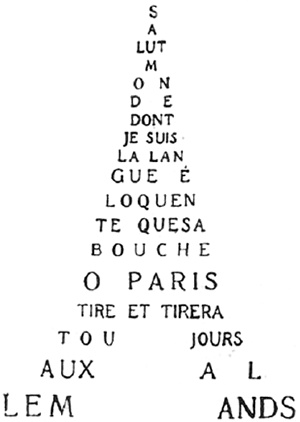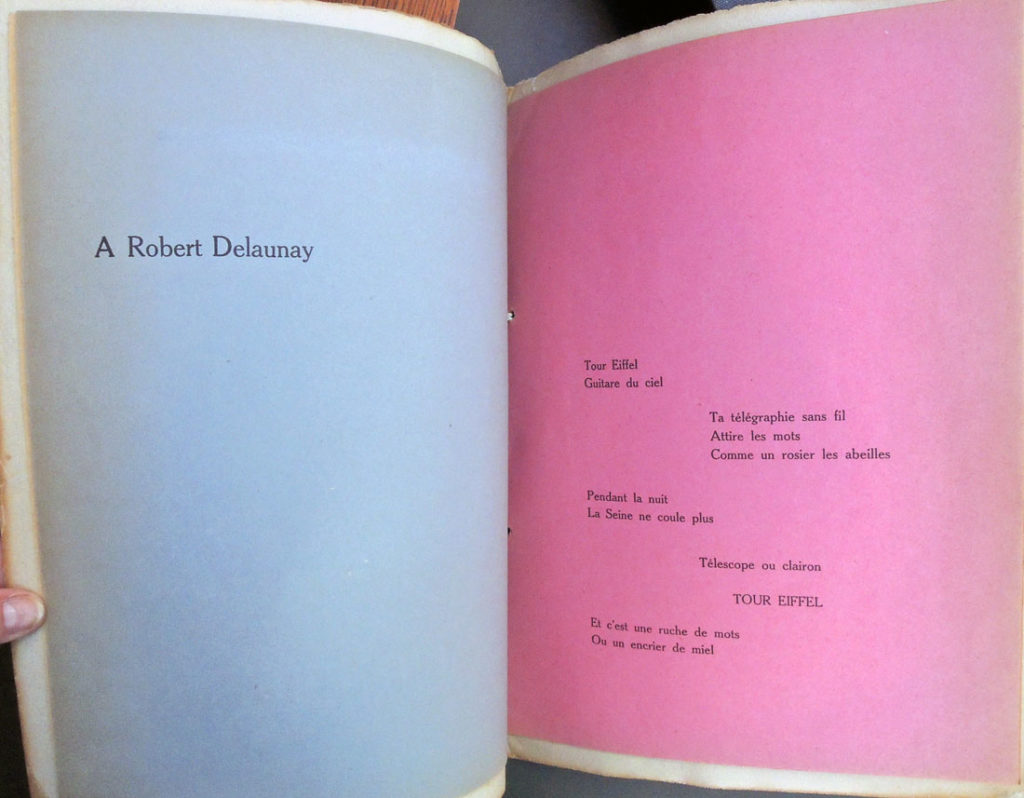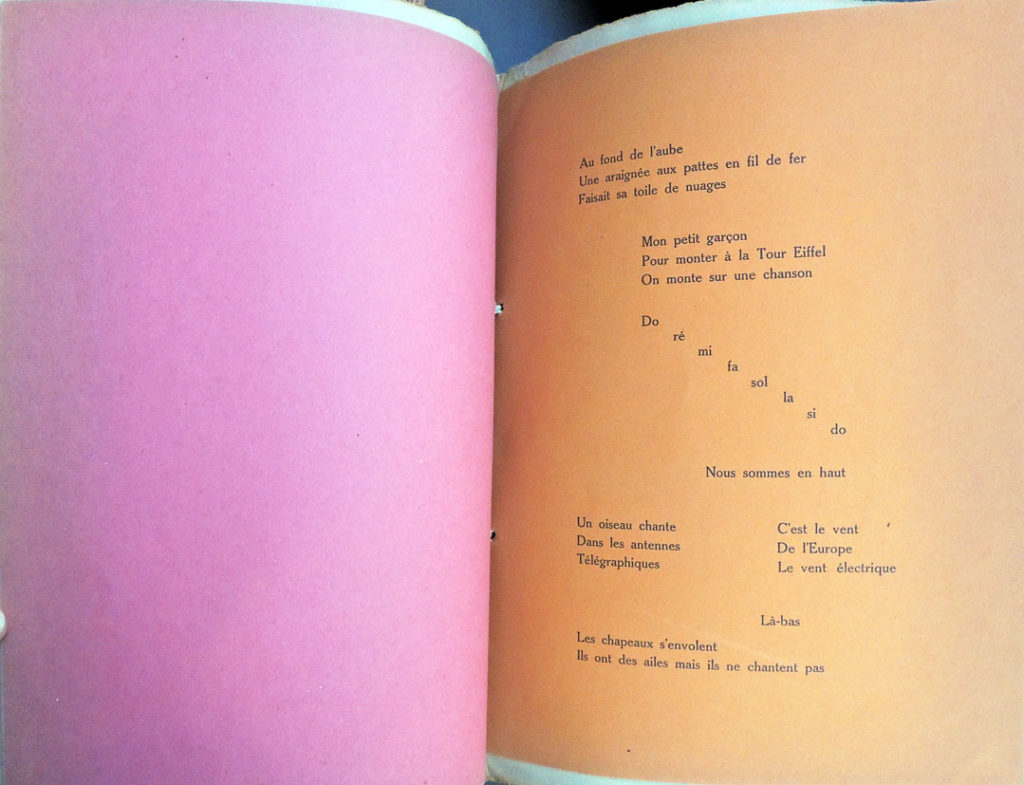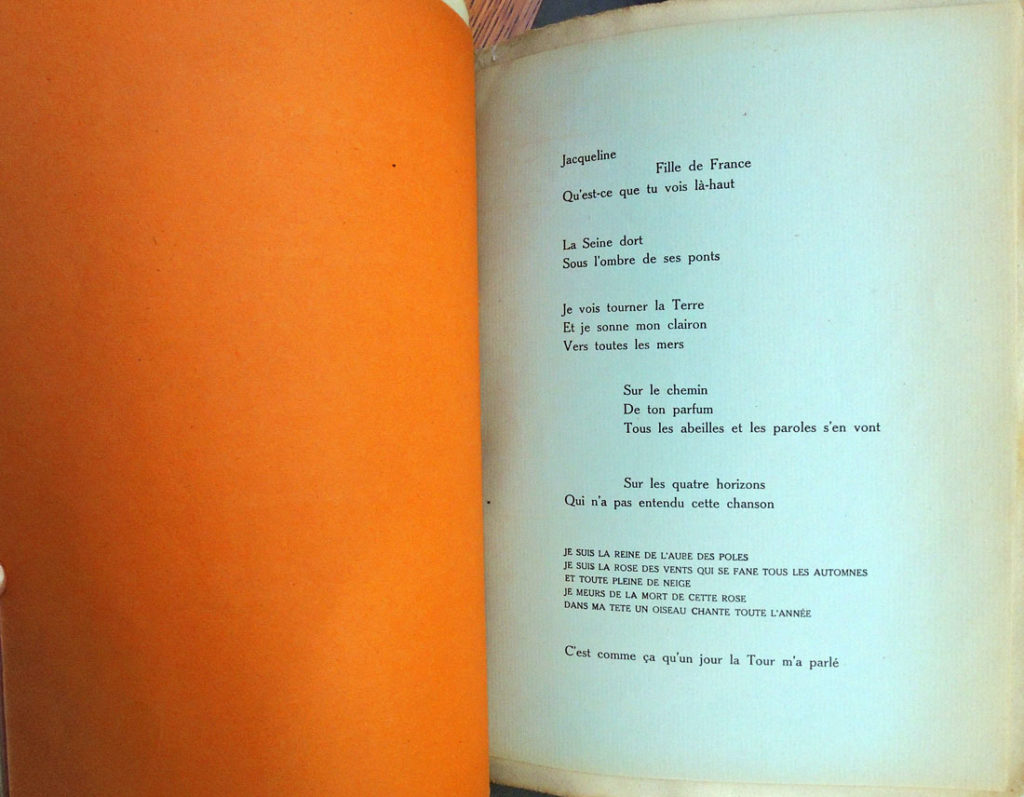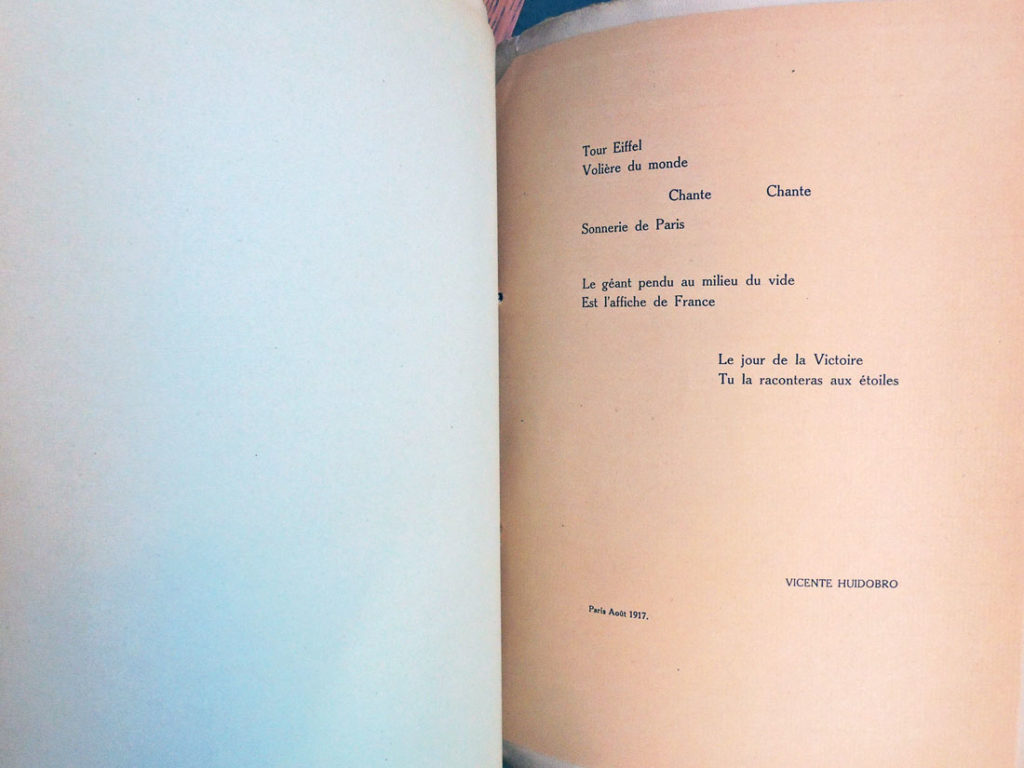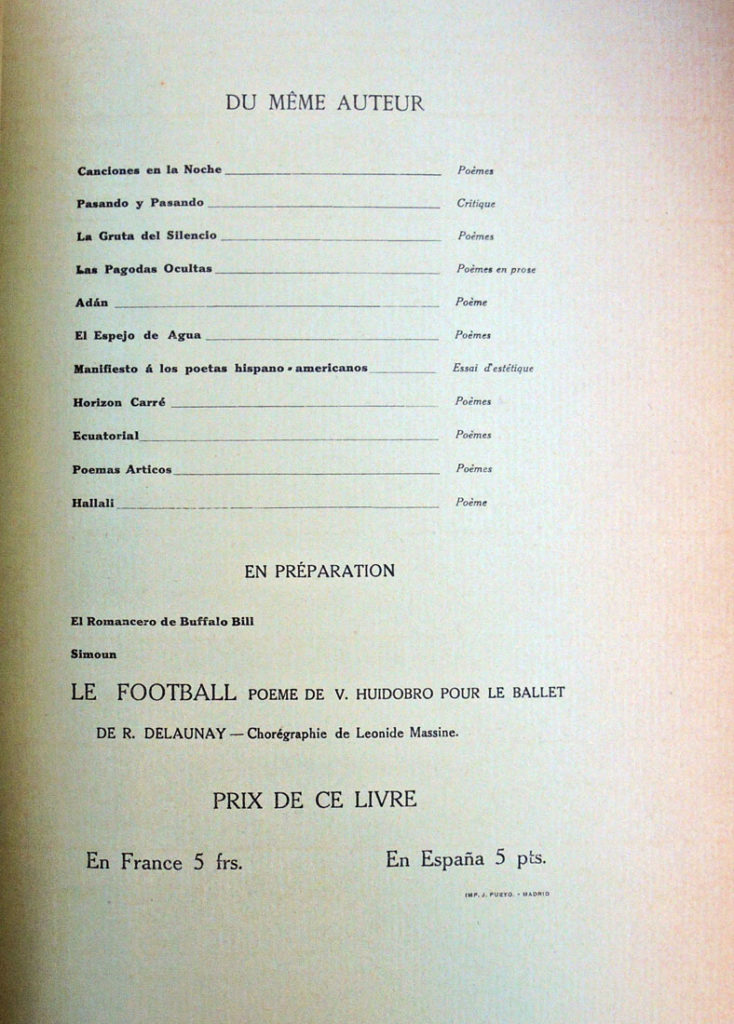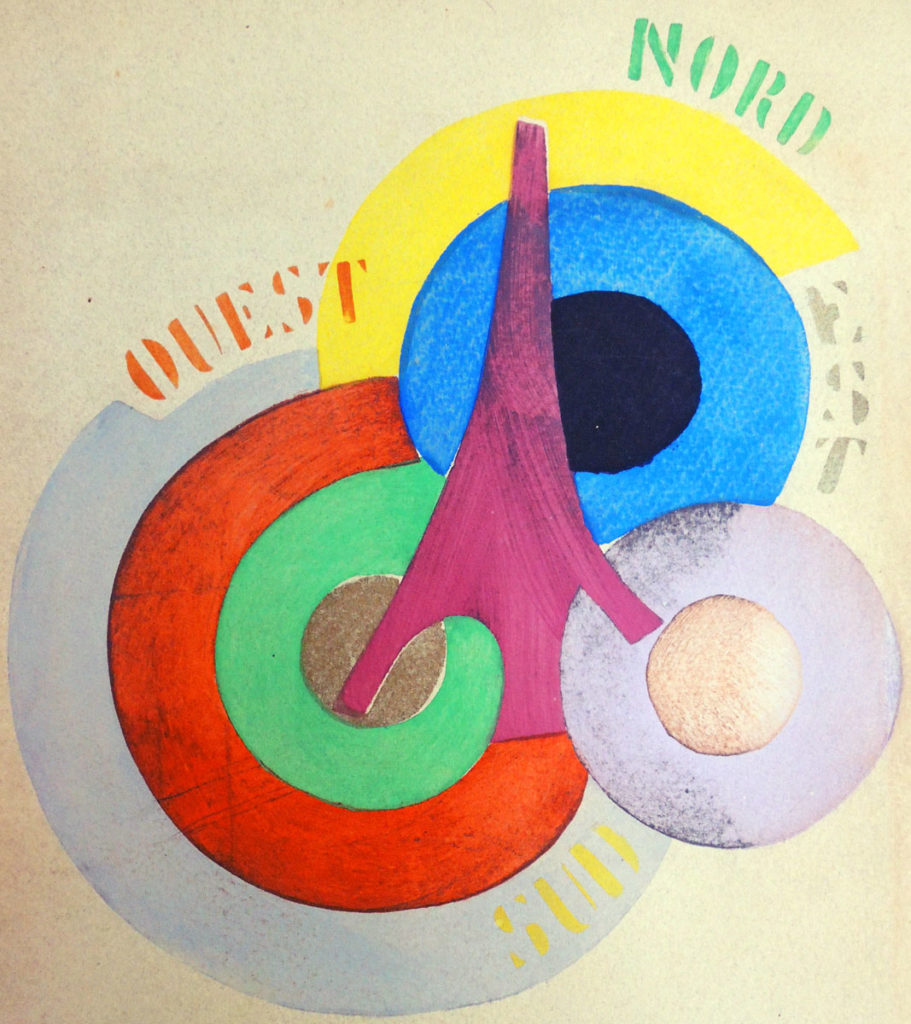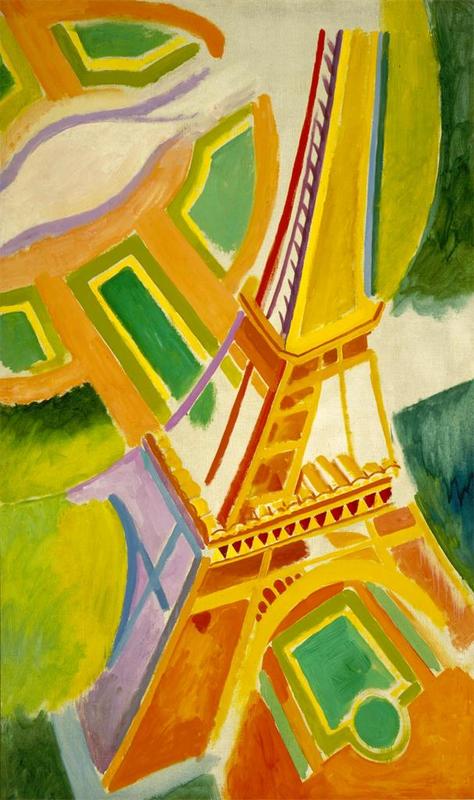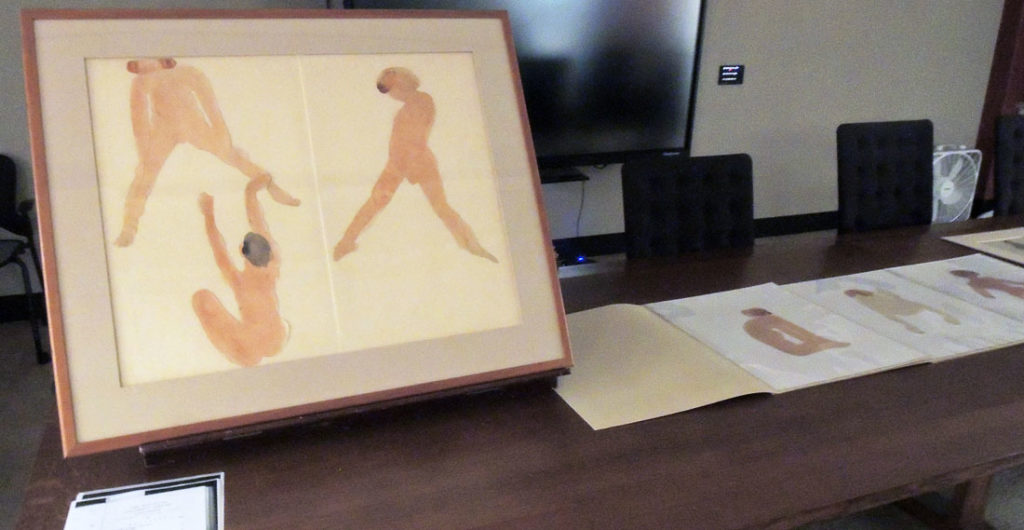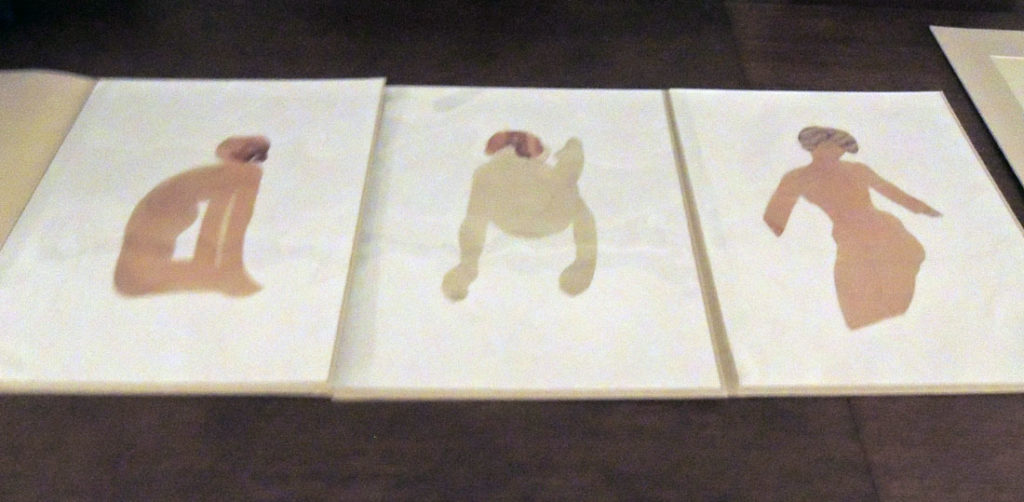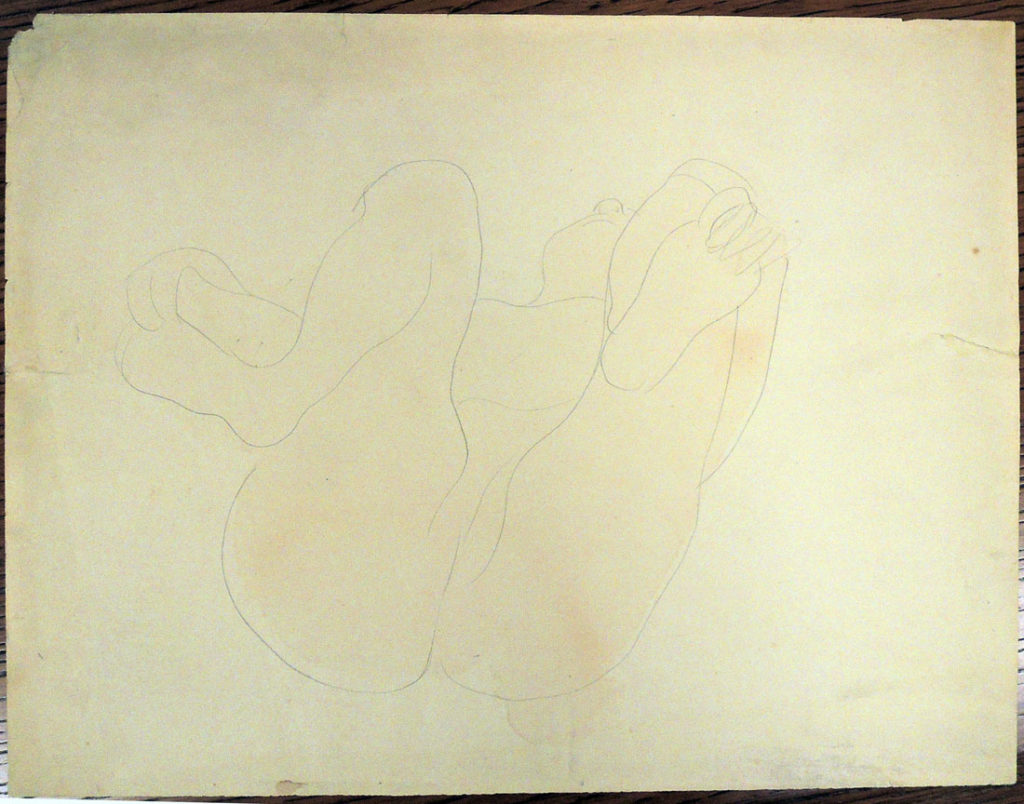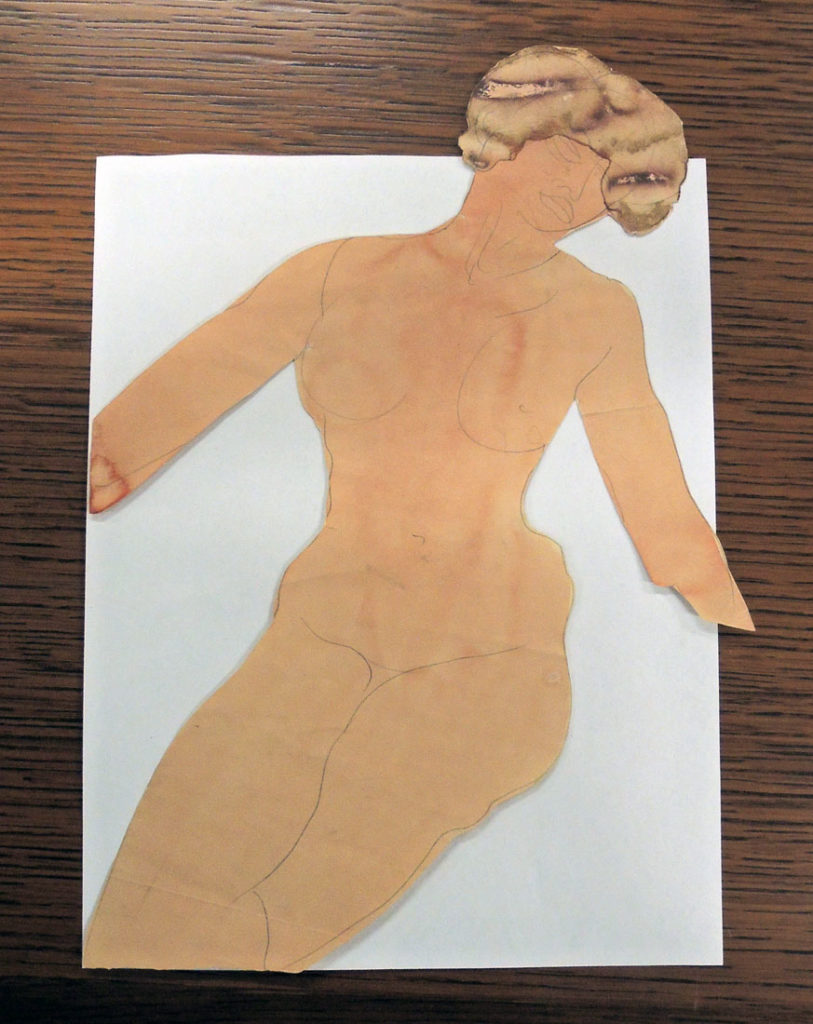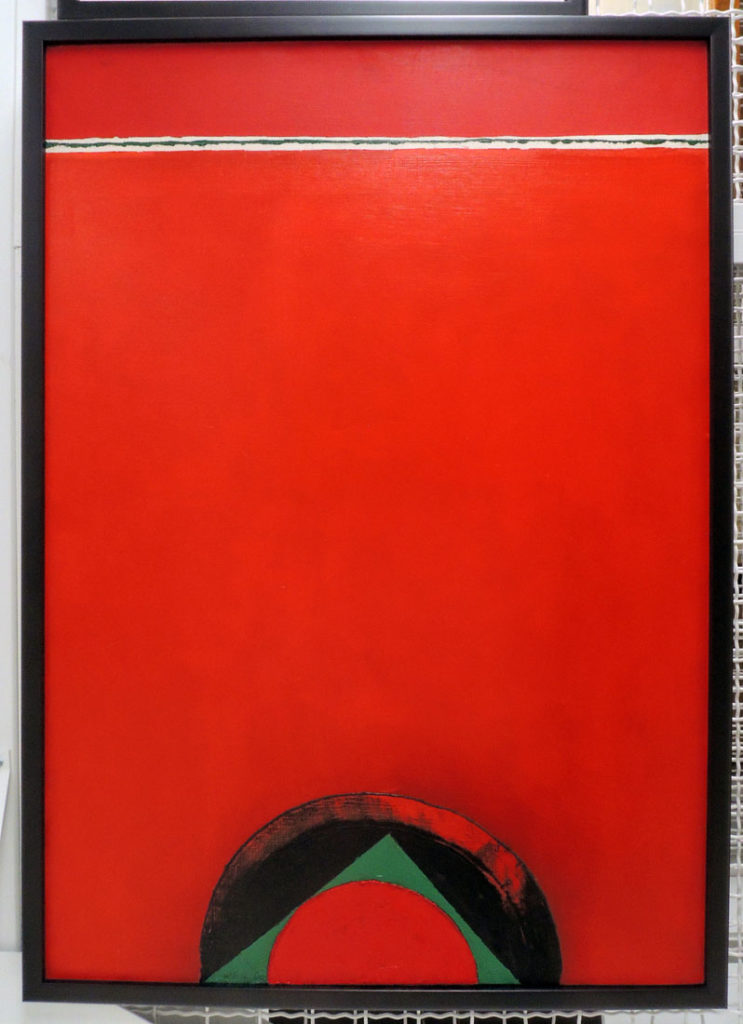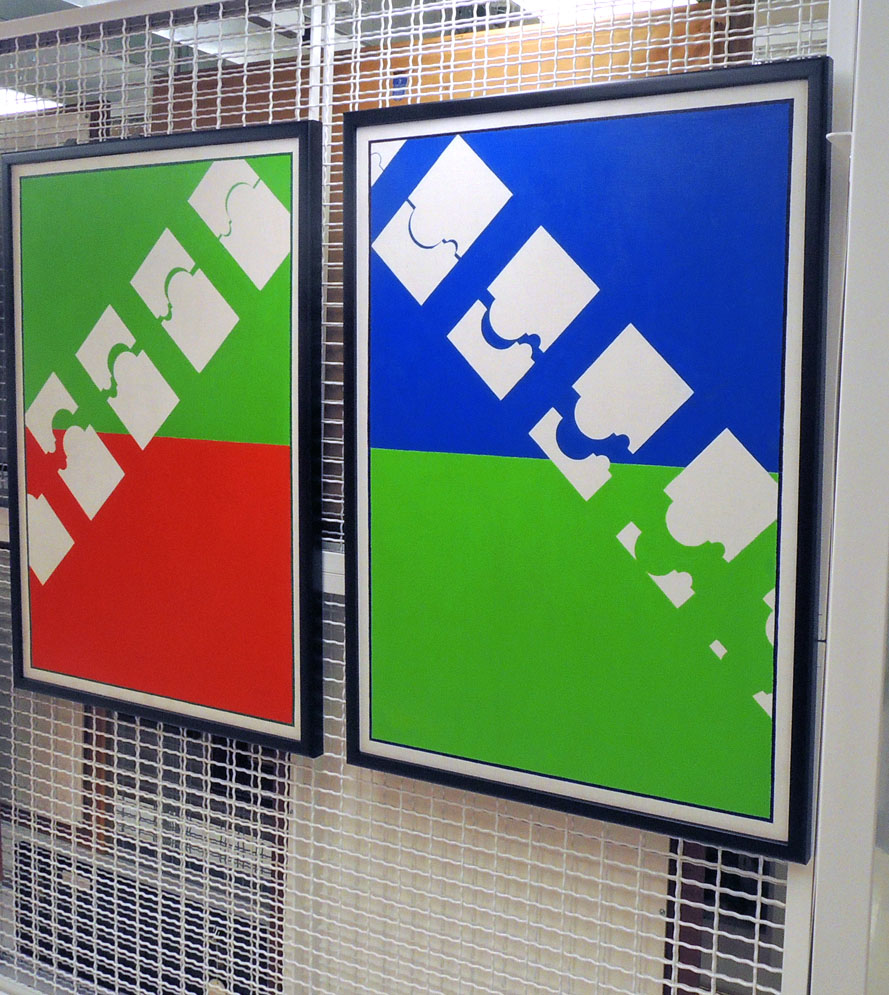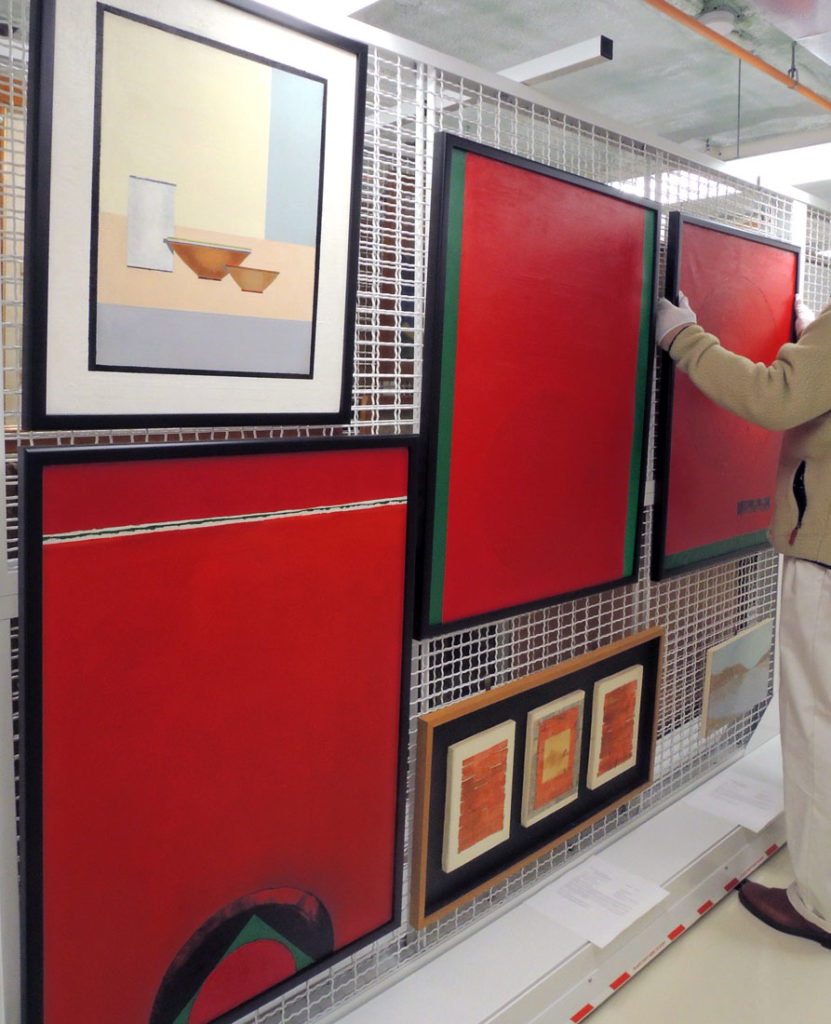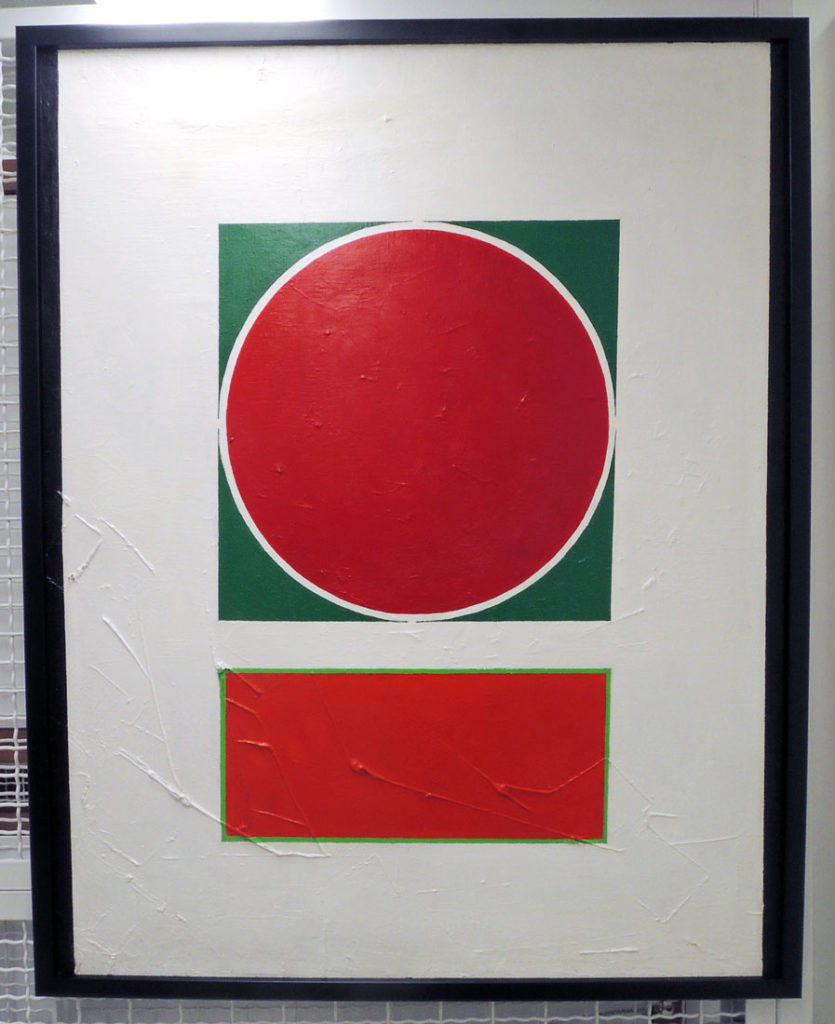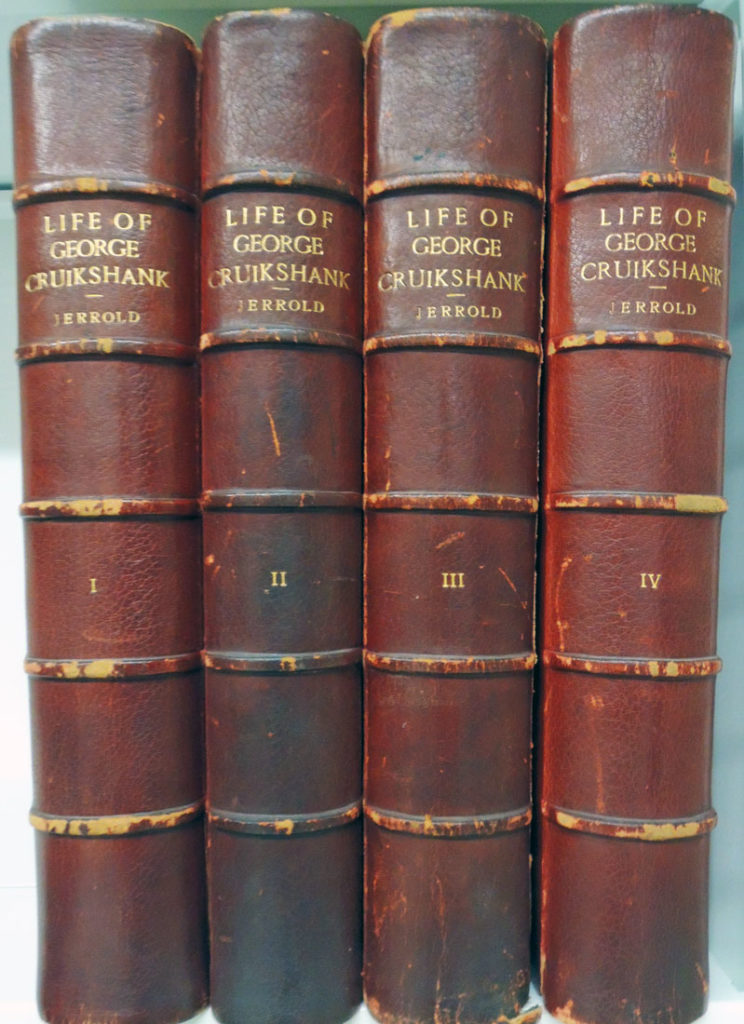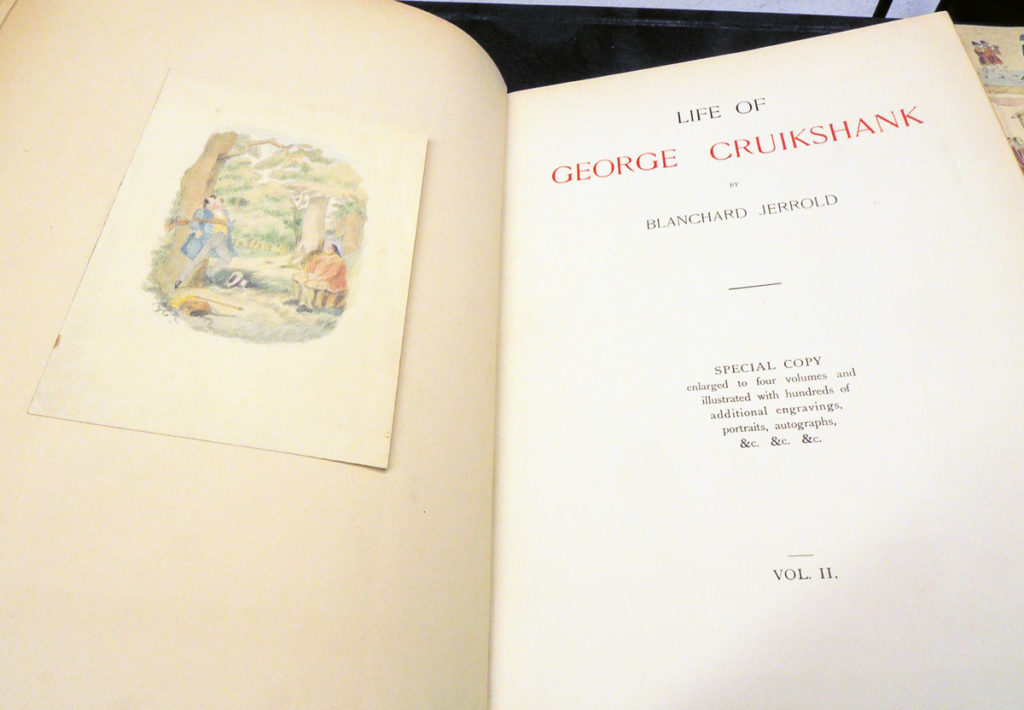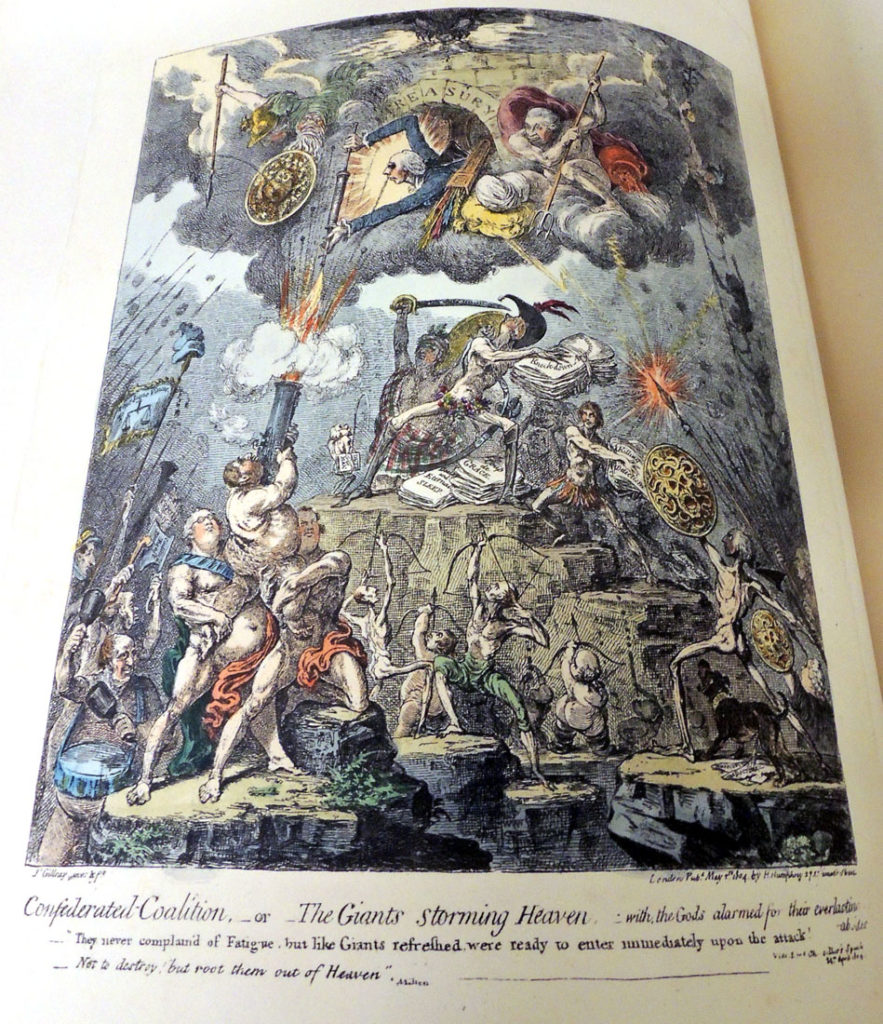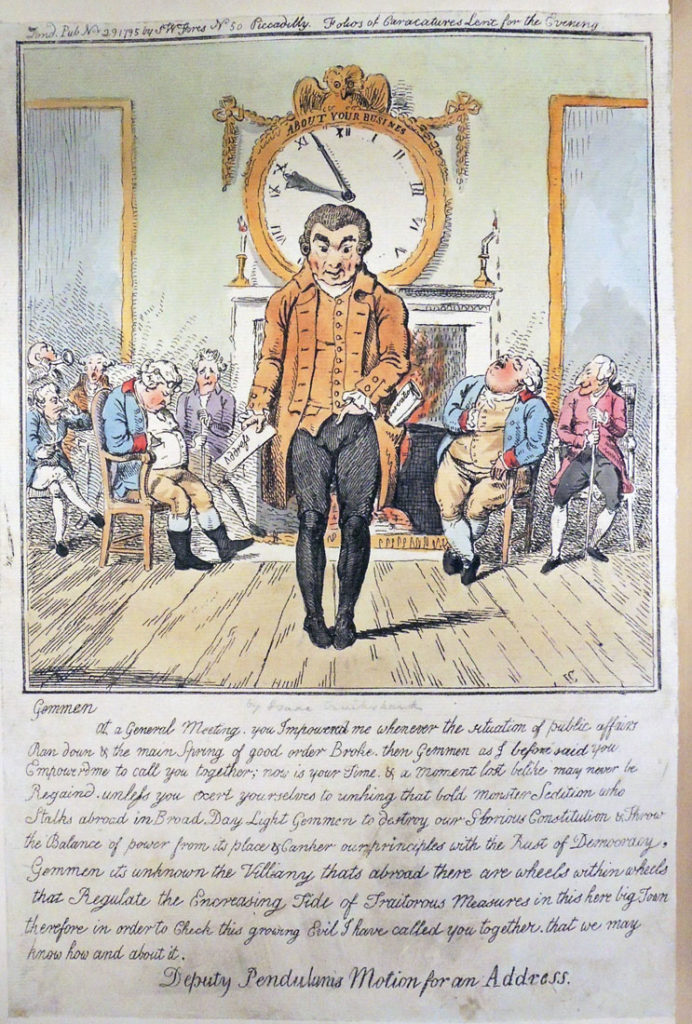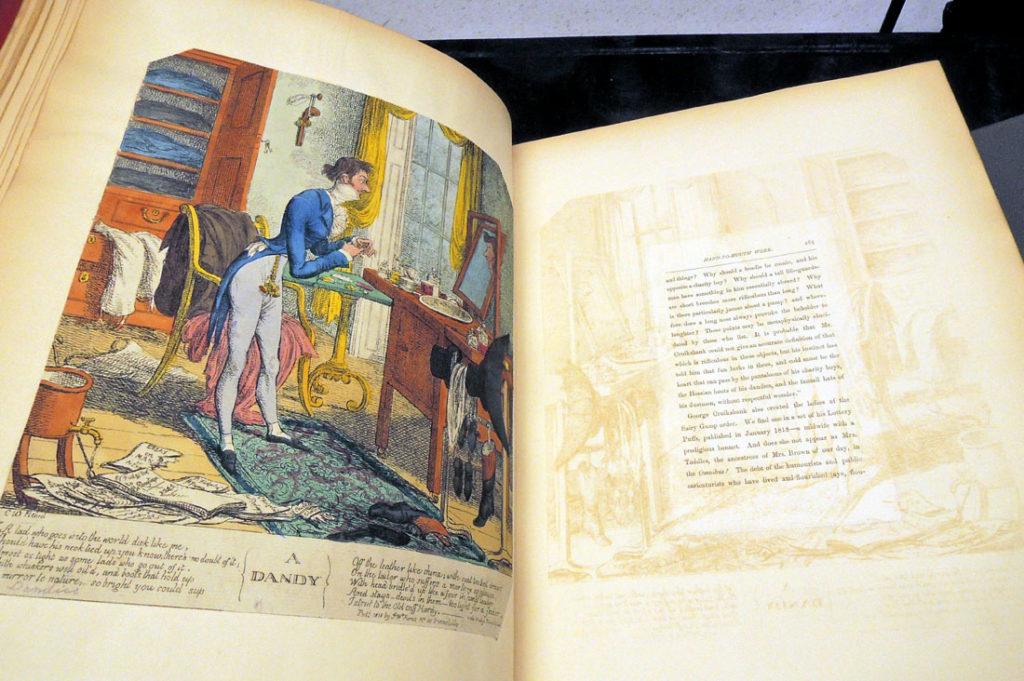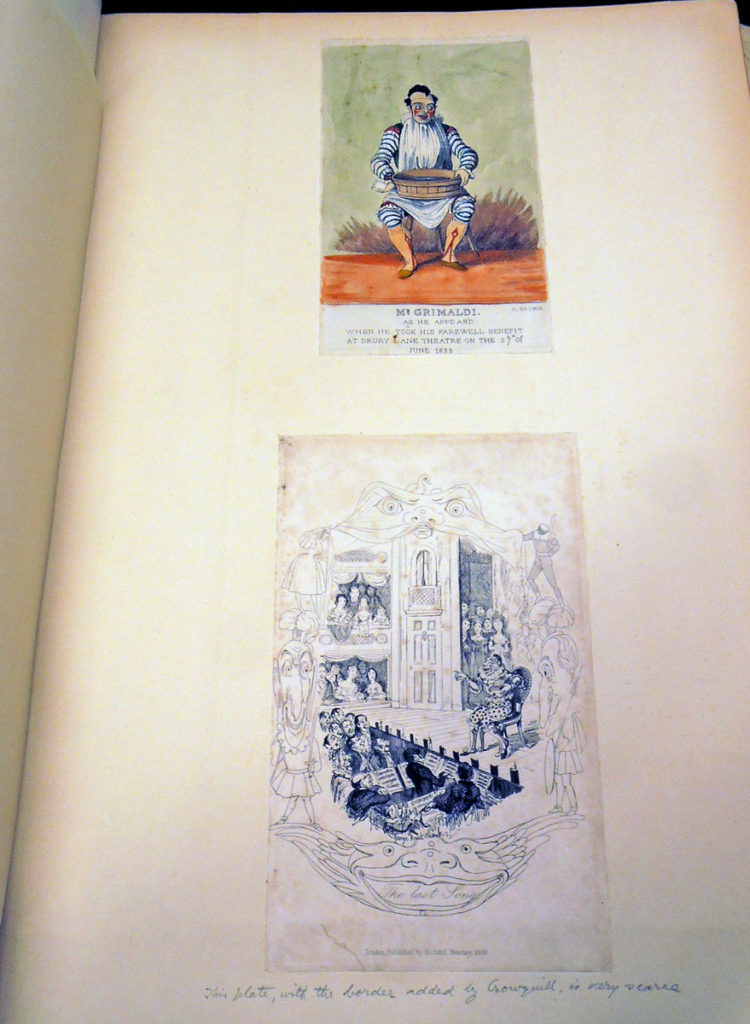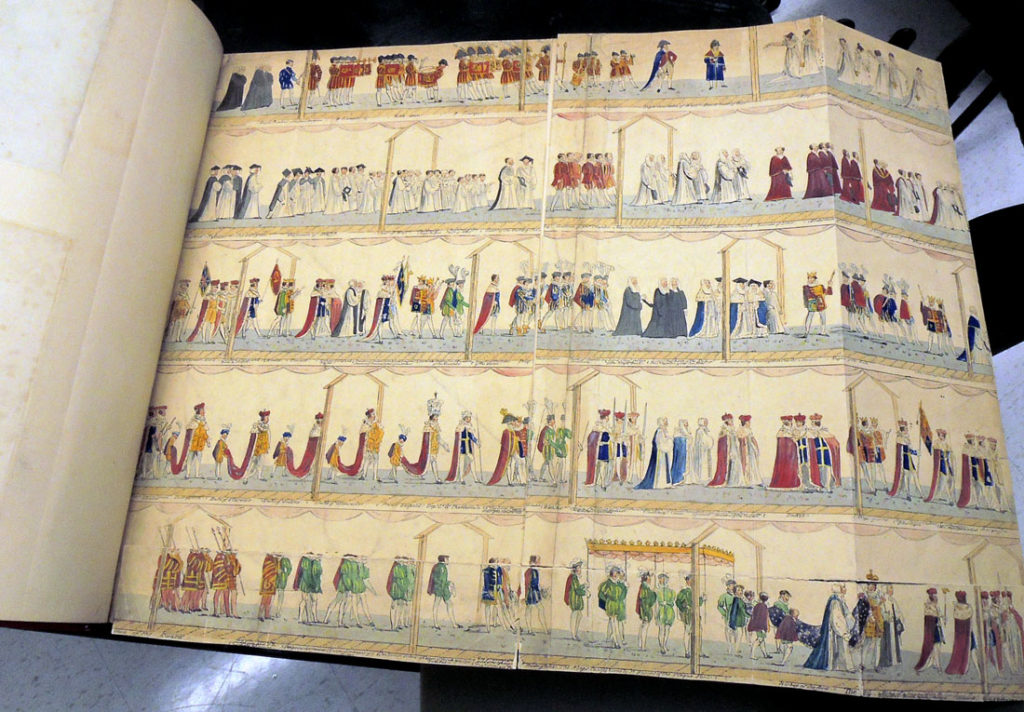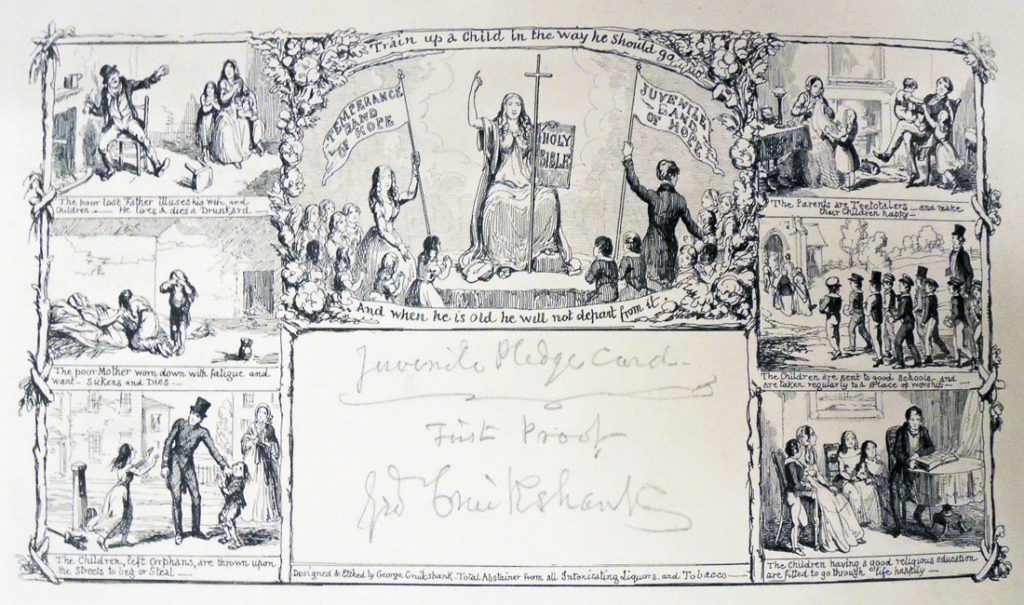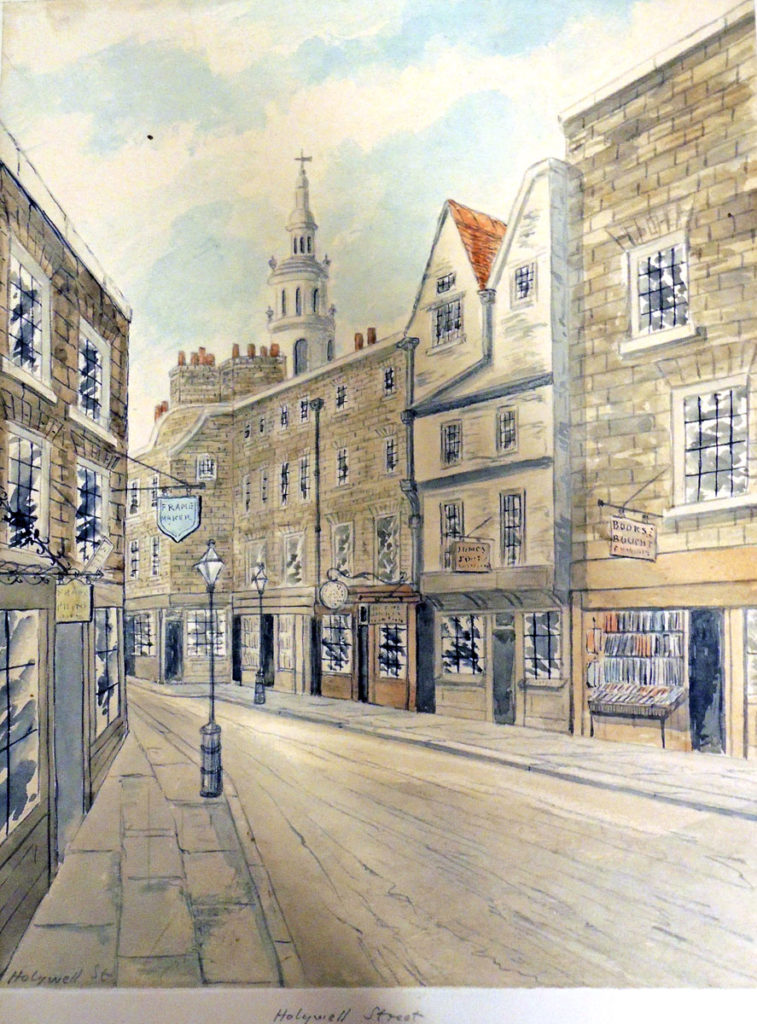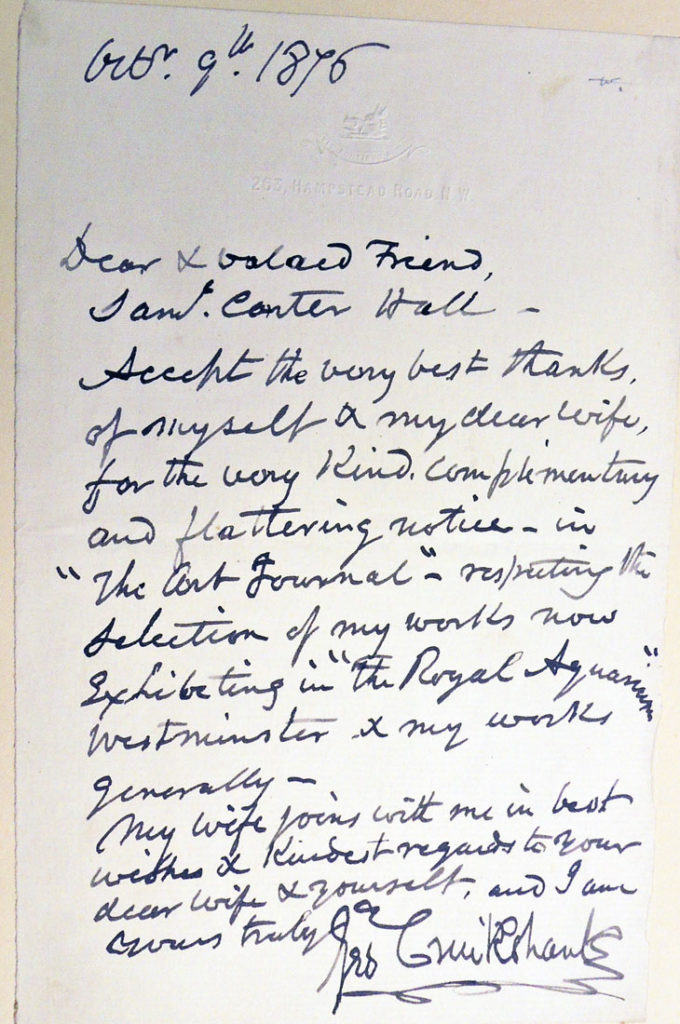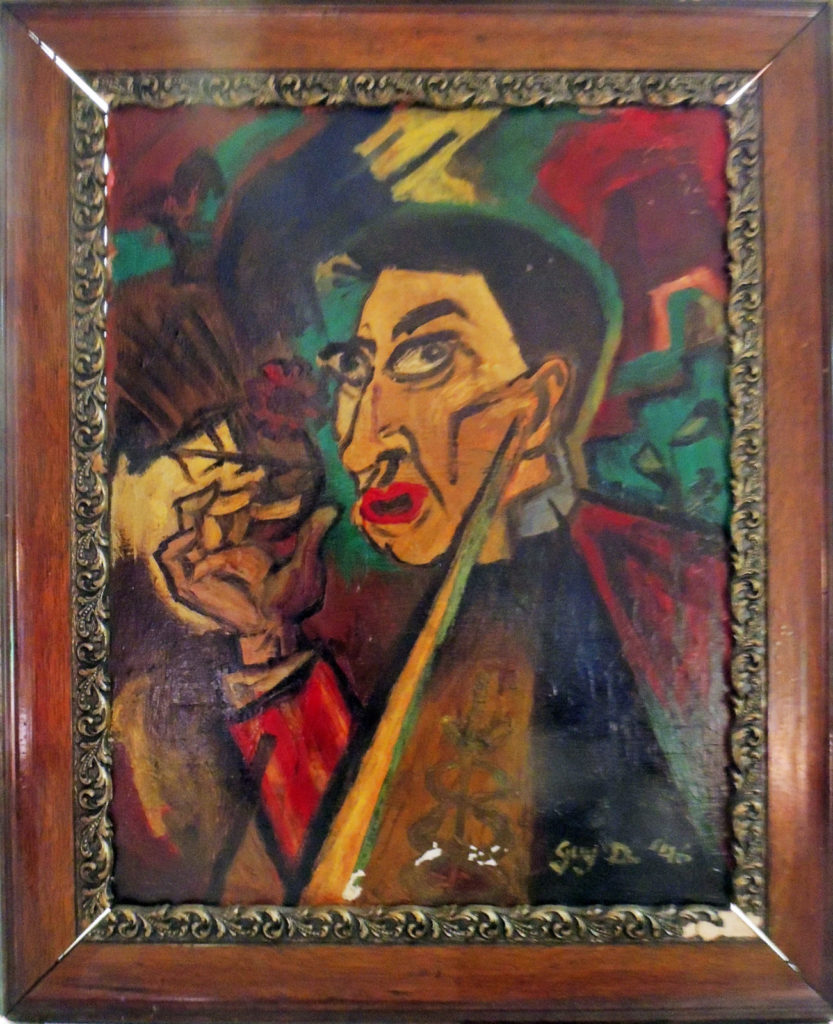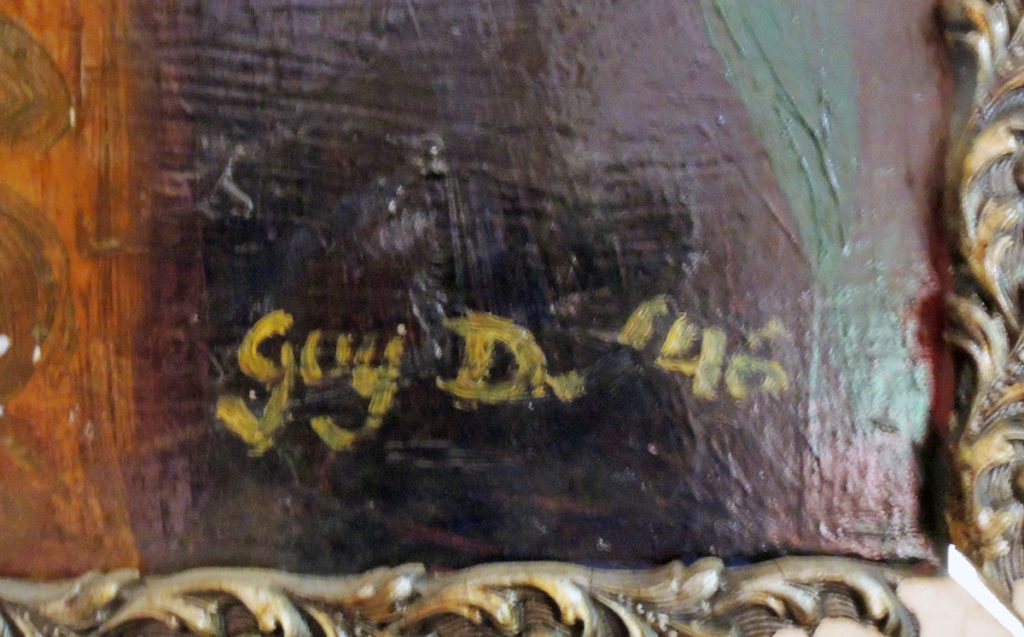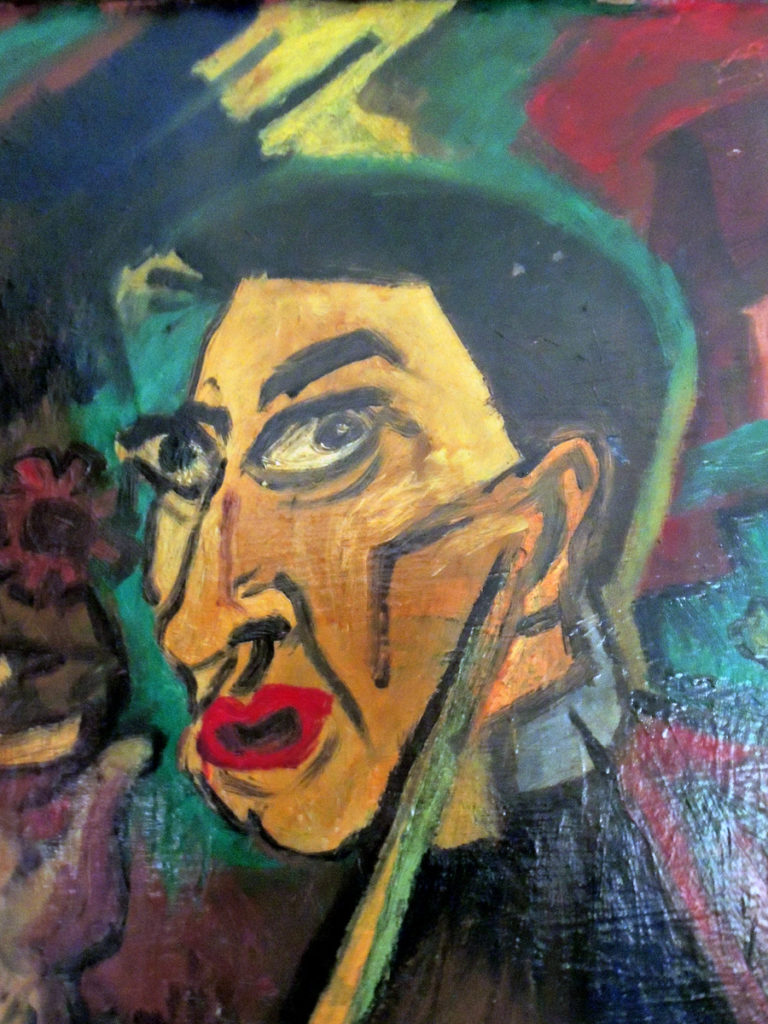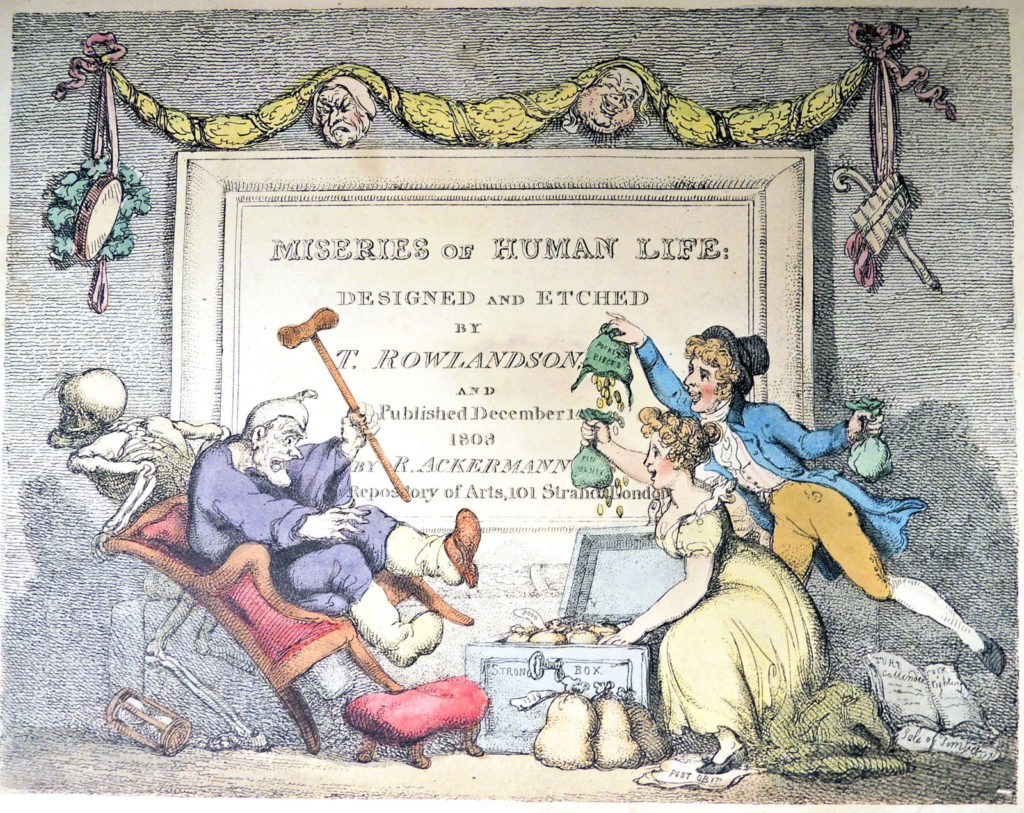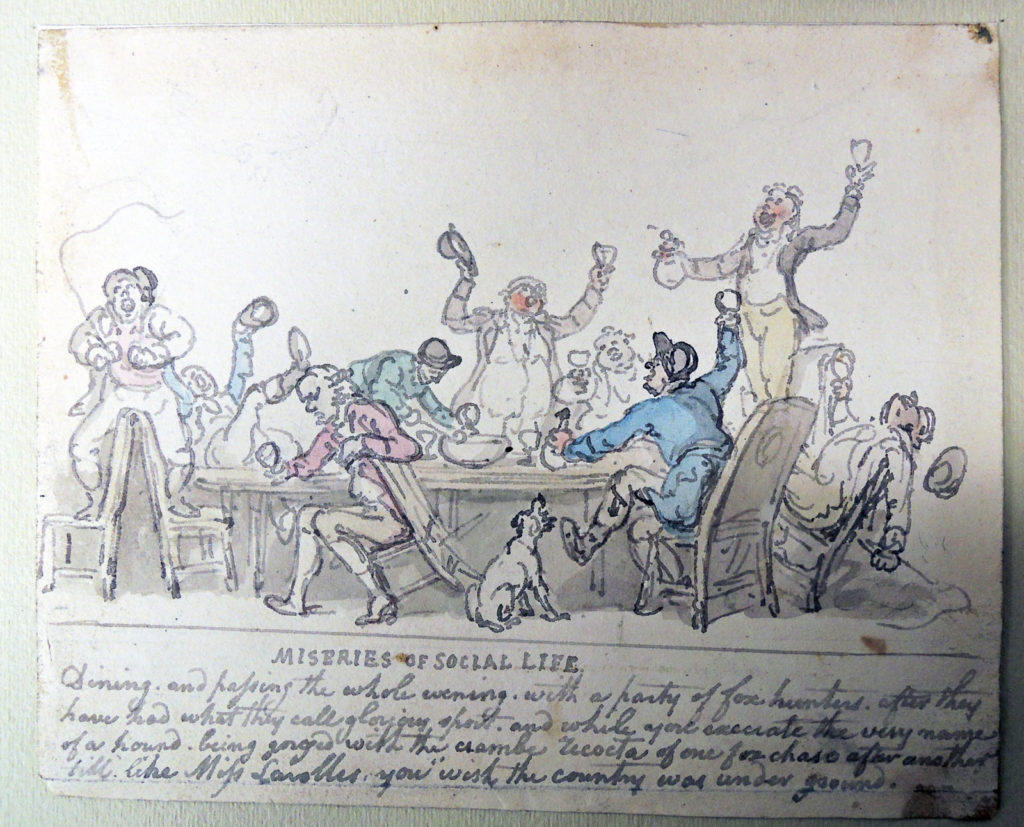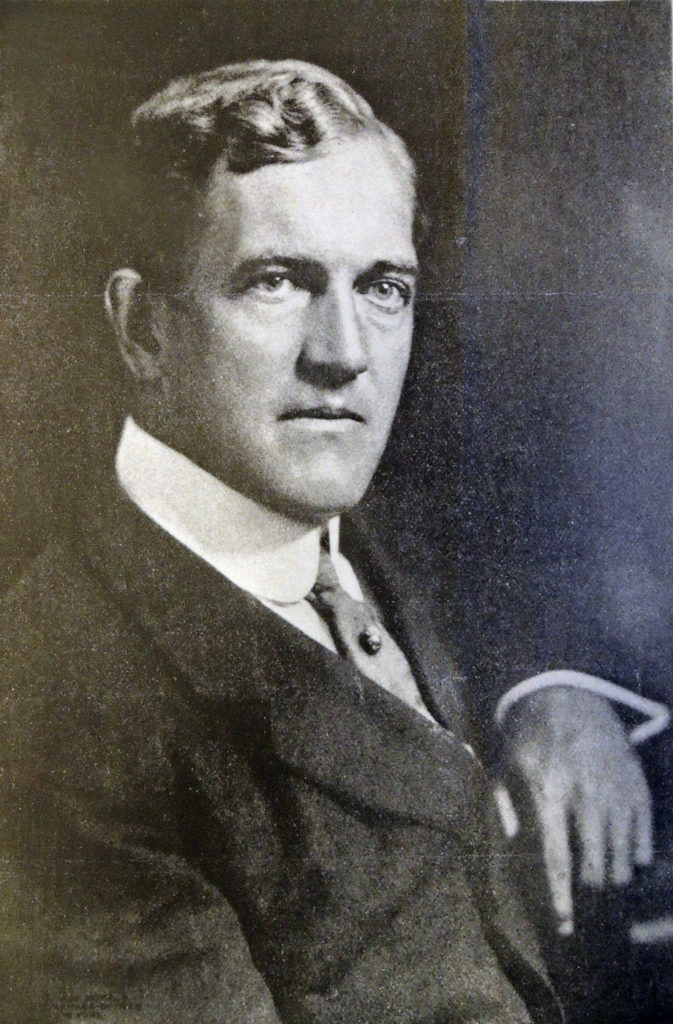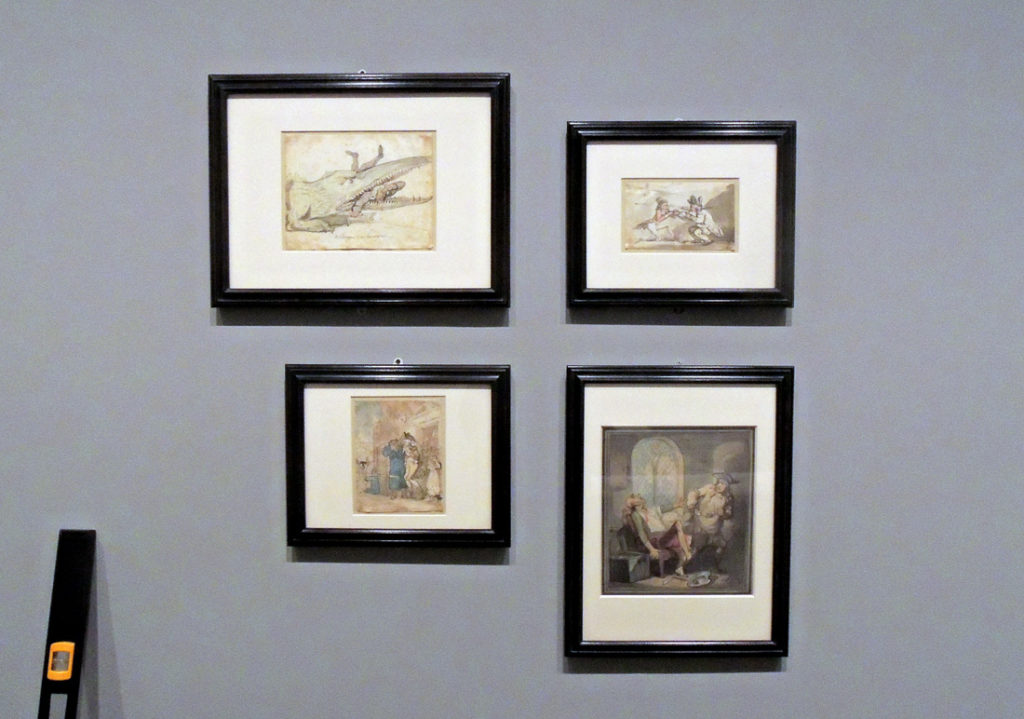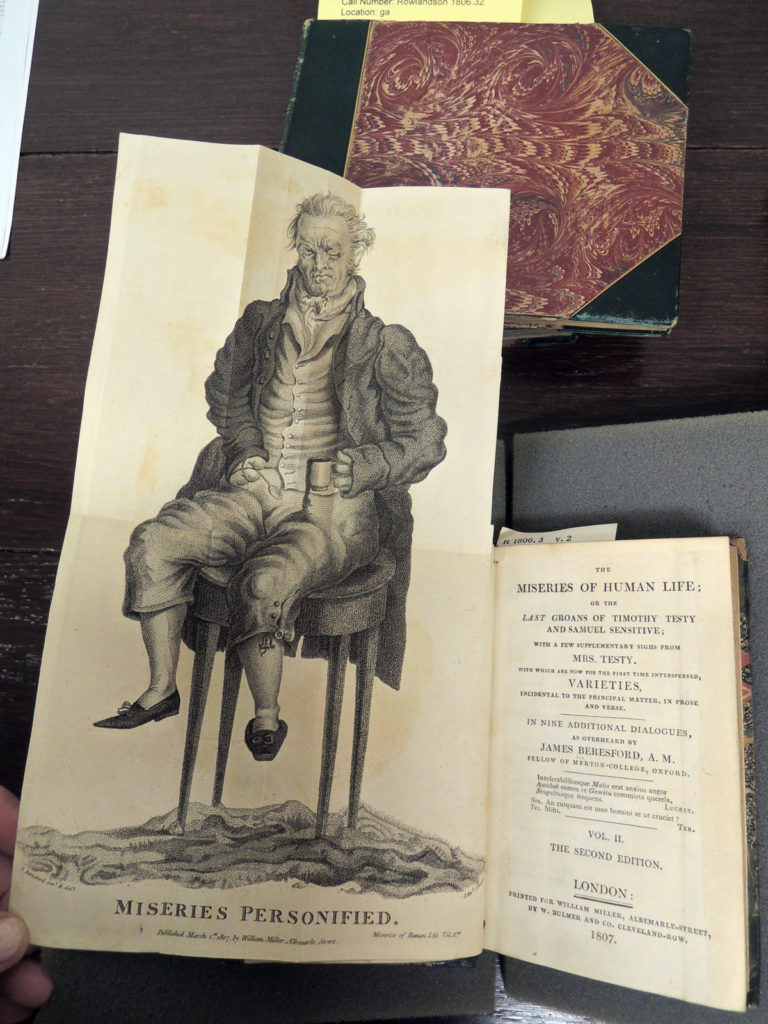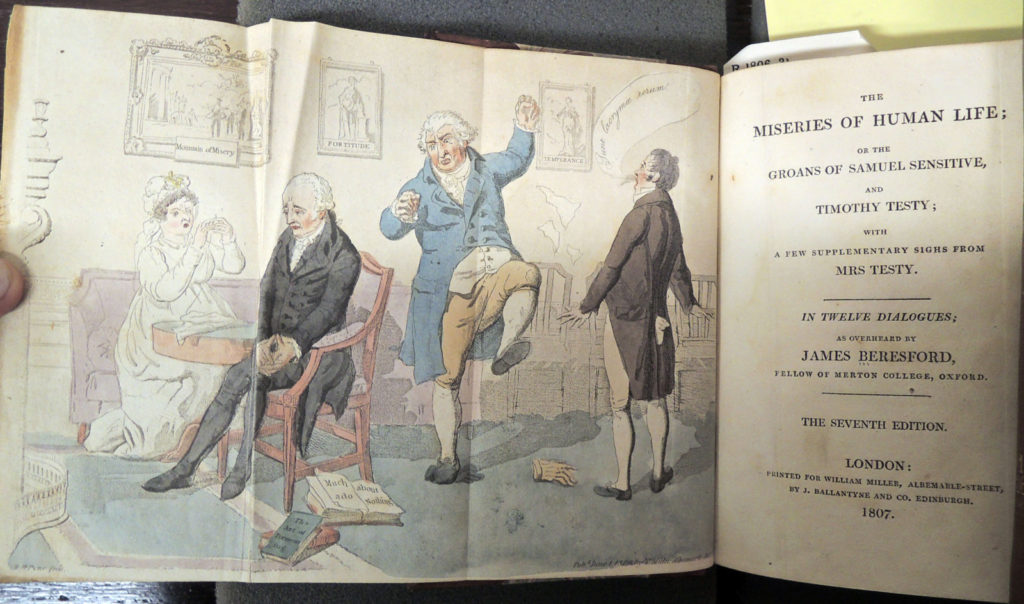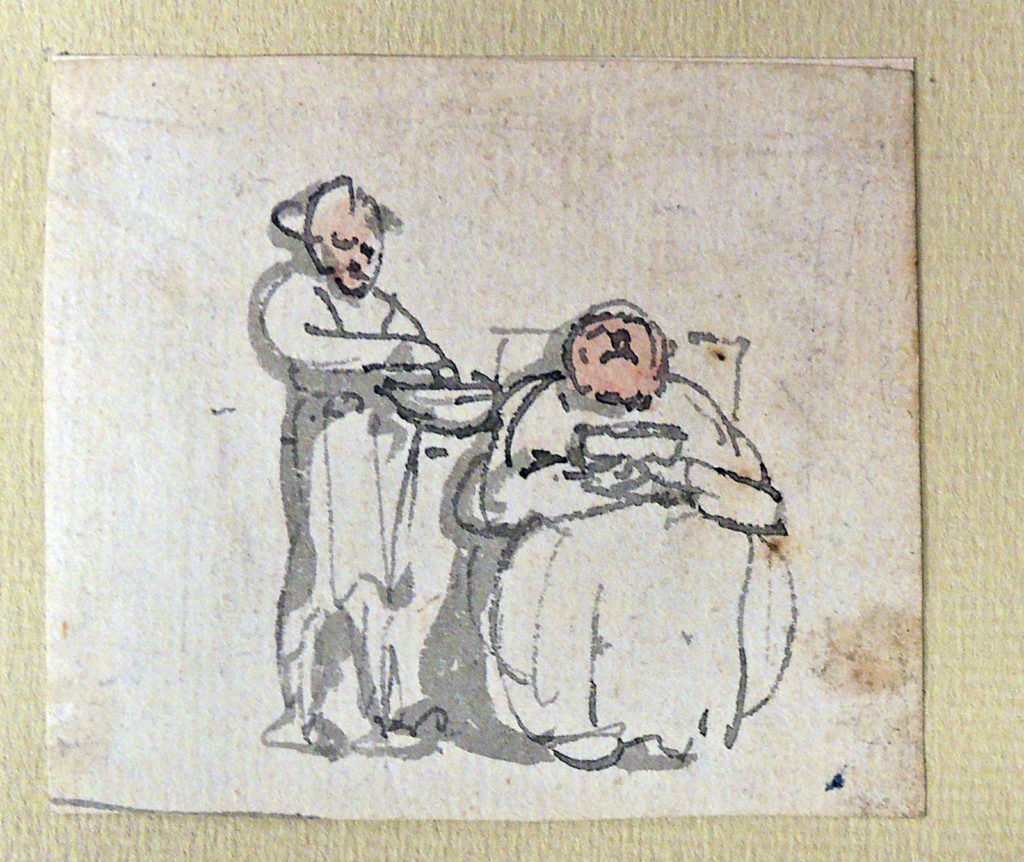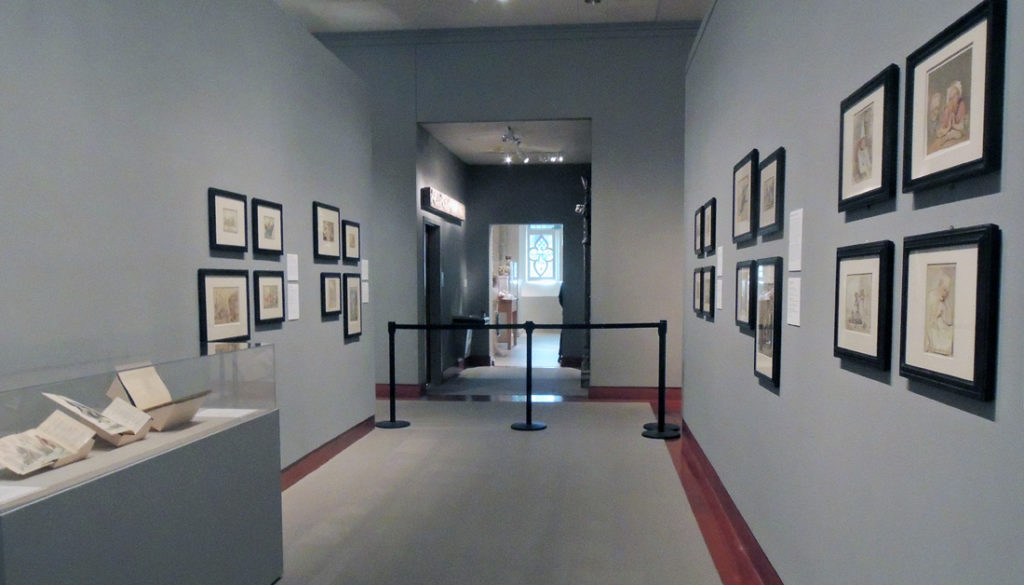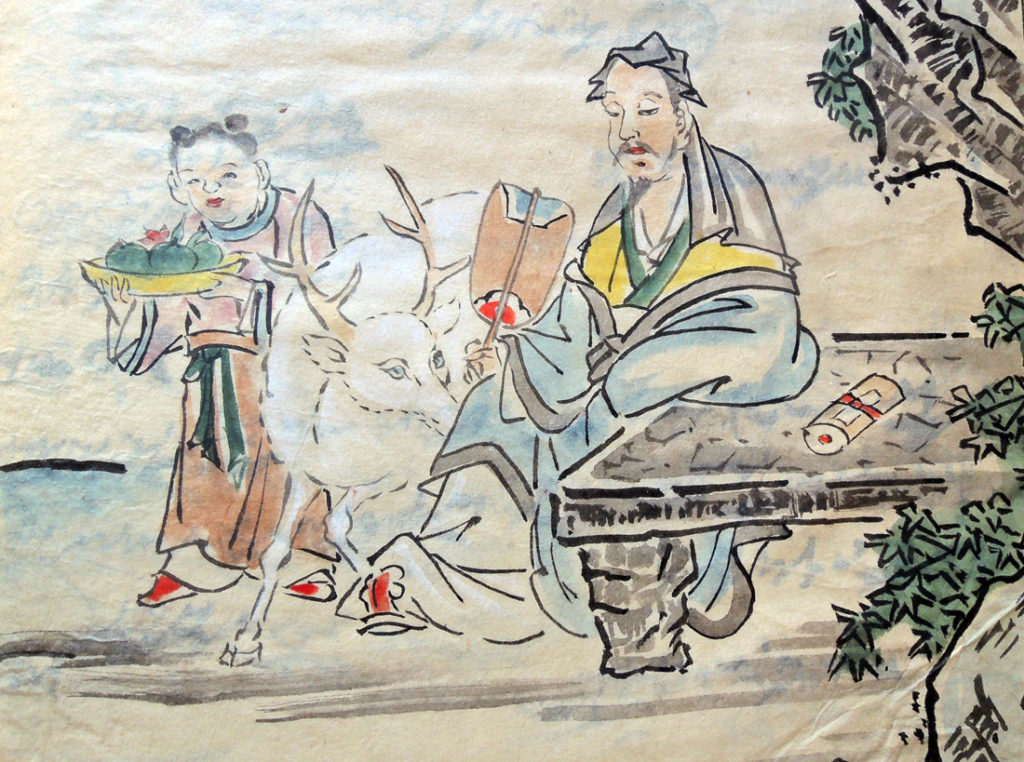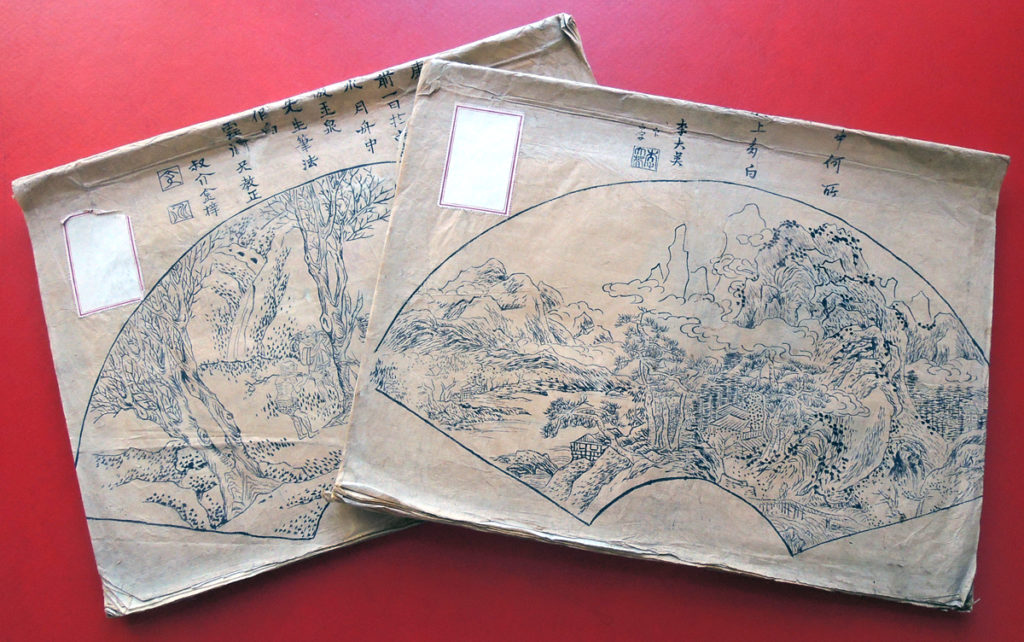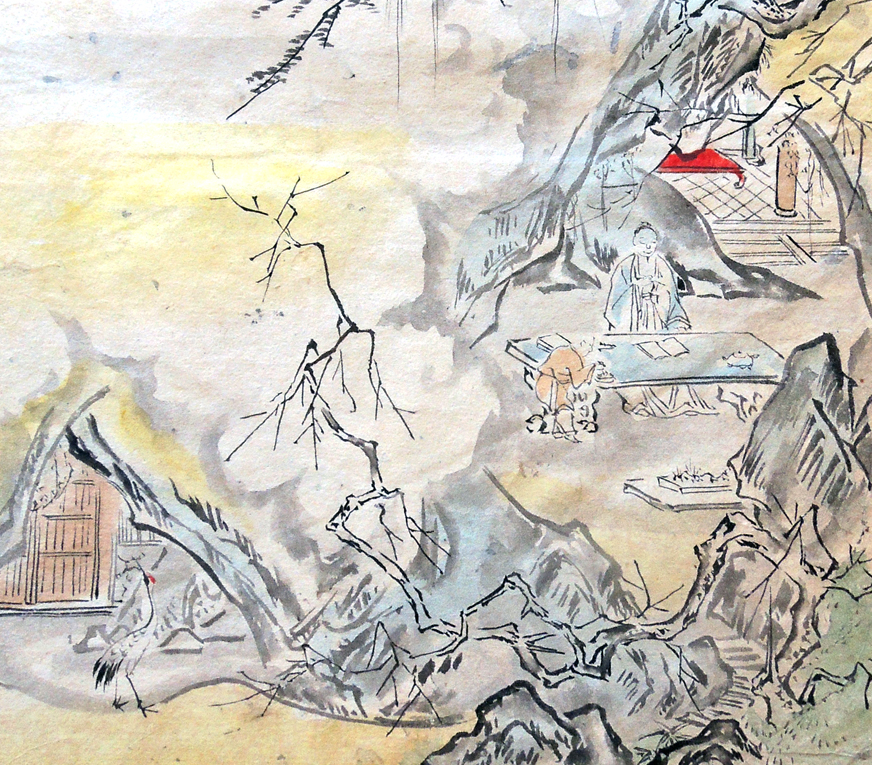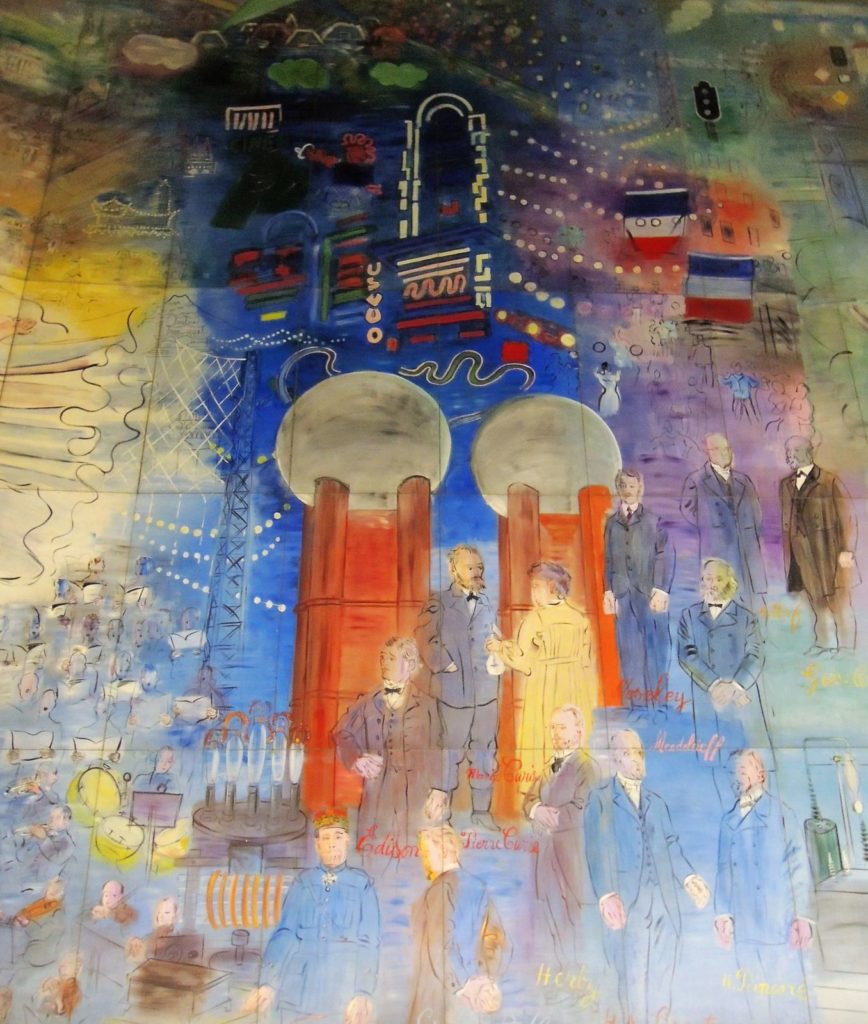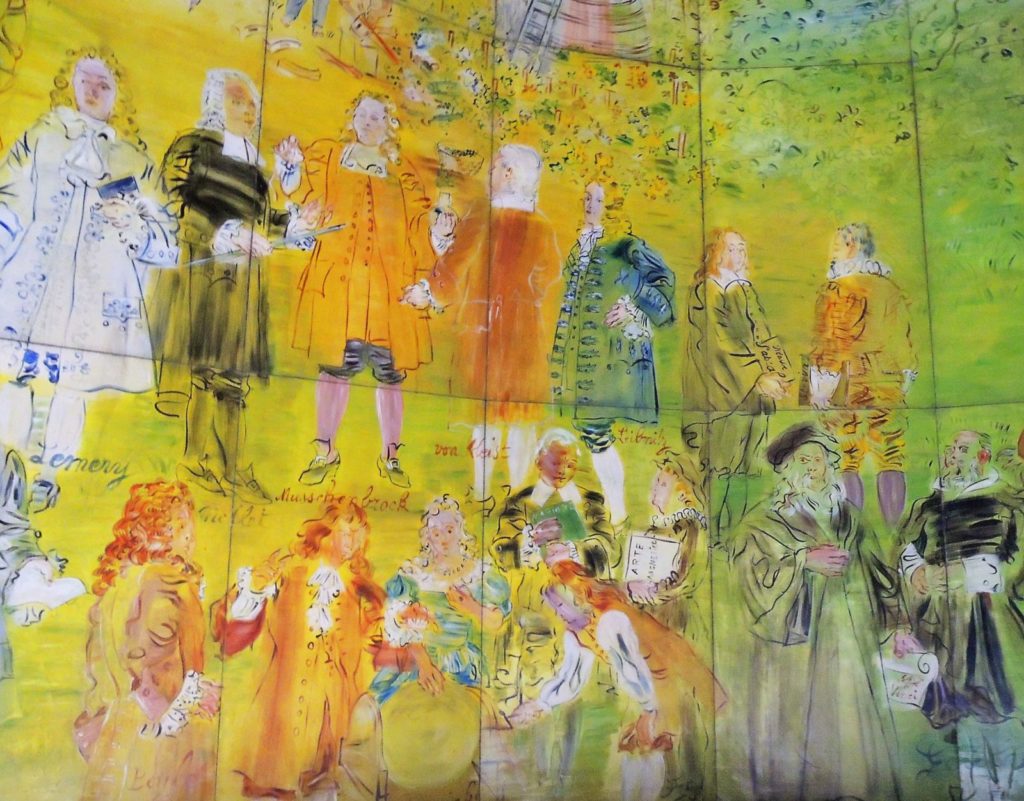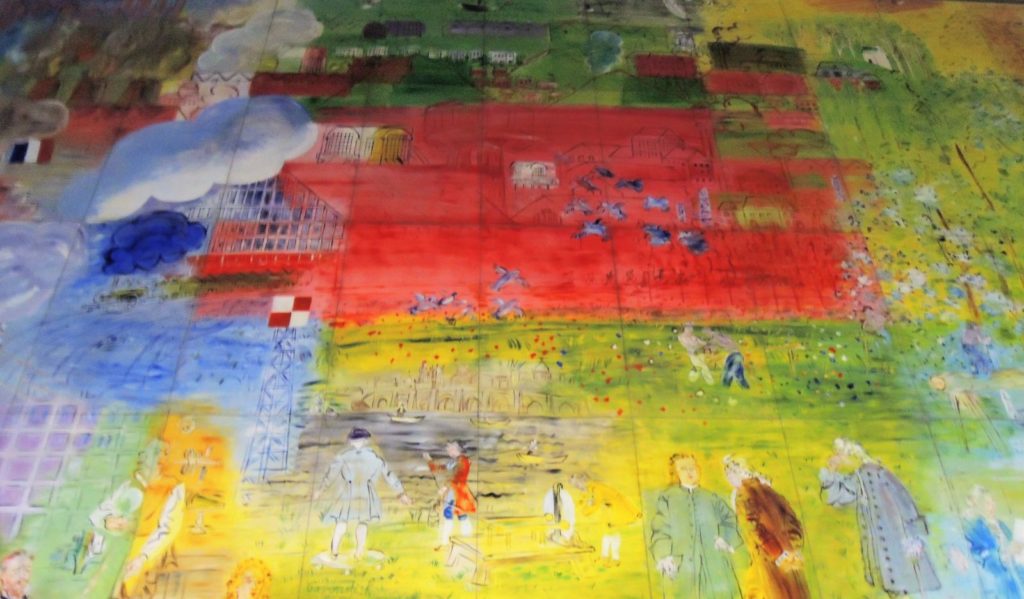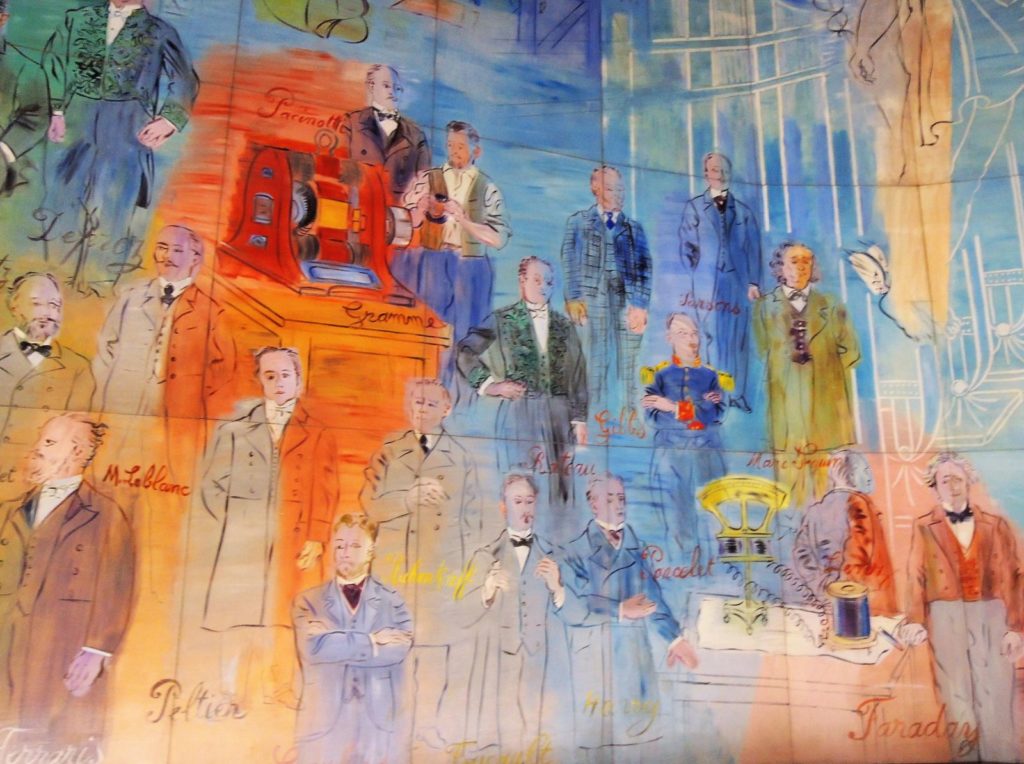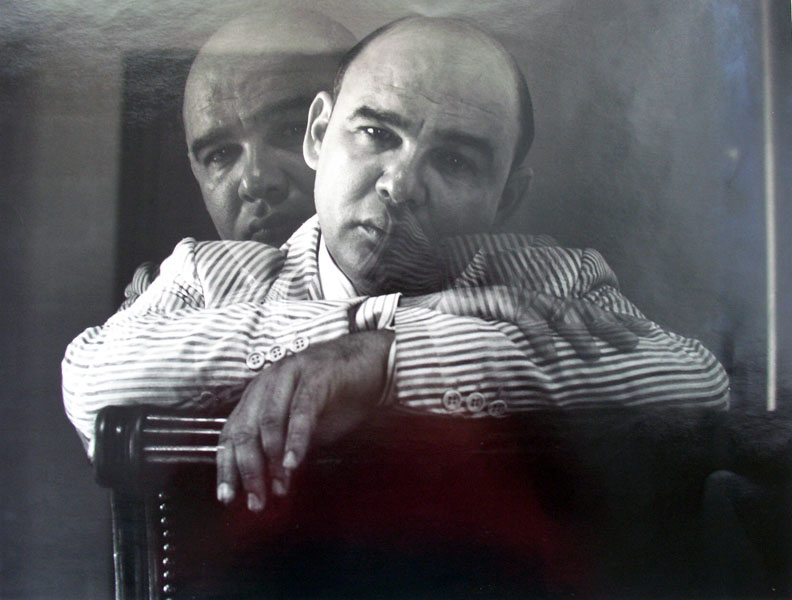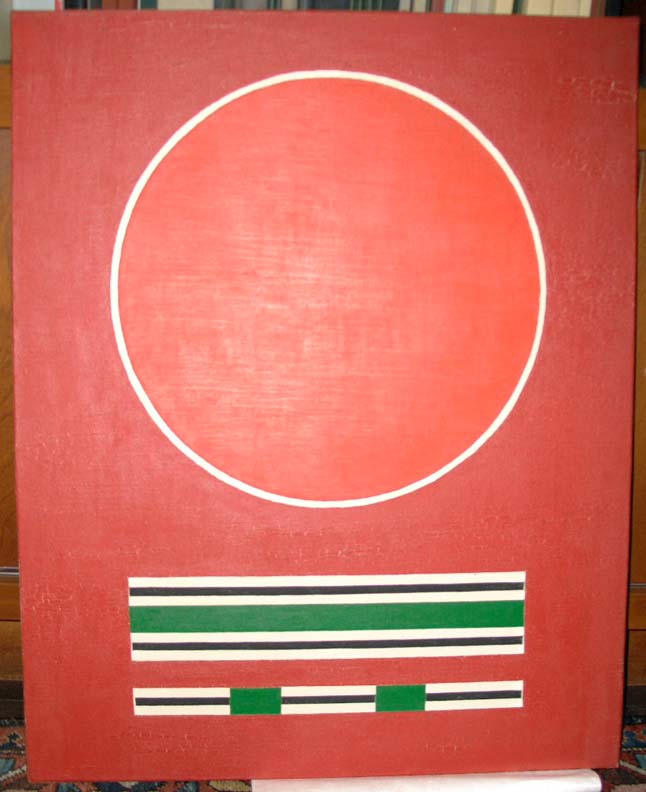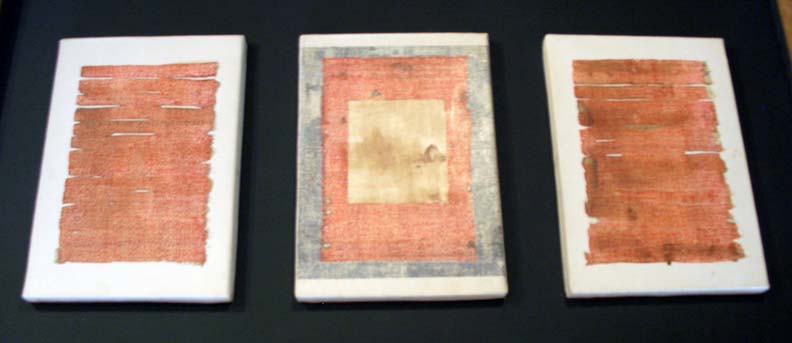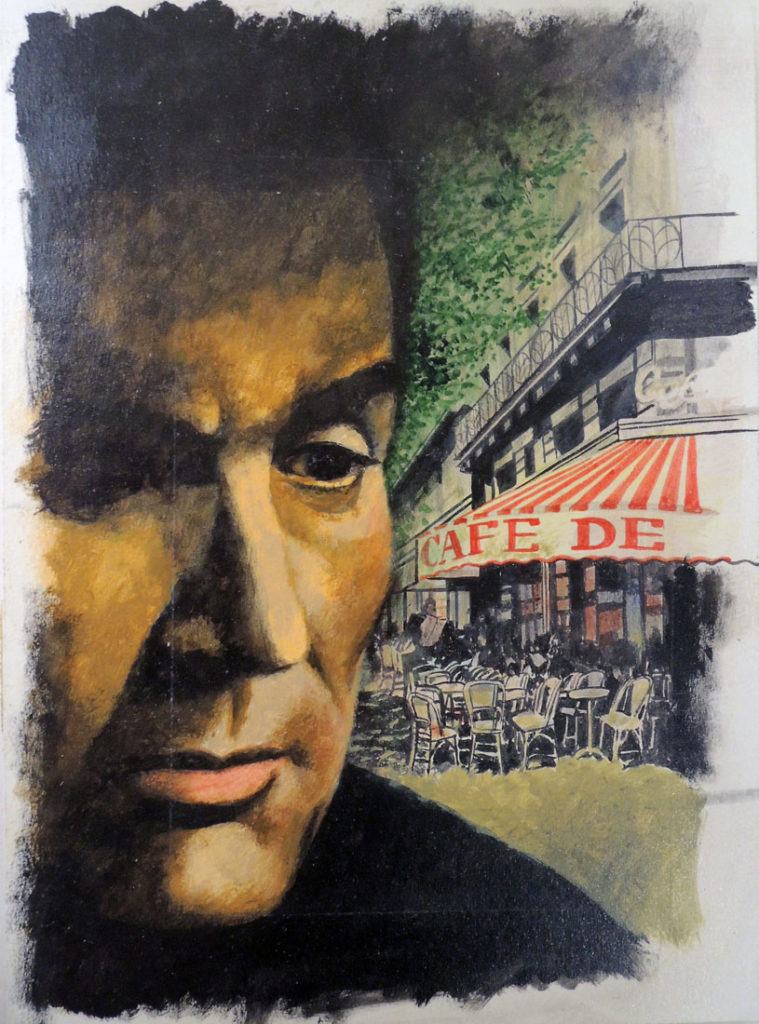 Design for Babylon Revisited painted by Hal Siegel. (c) Charles Scribner’s Sons
Design for Babylon Revisited painted by Hal Siegel. (c) Charles Scribner’s Sons
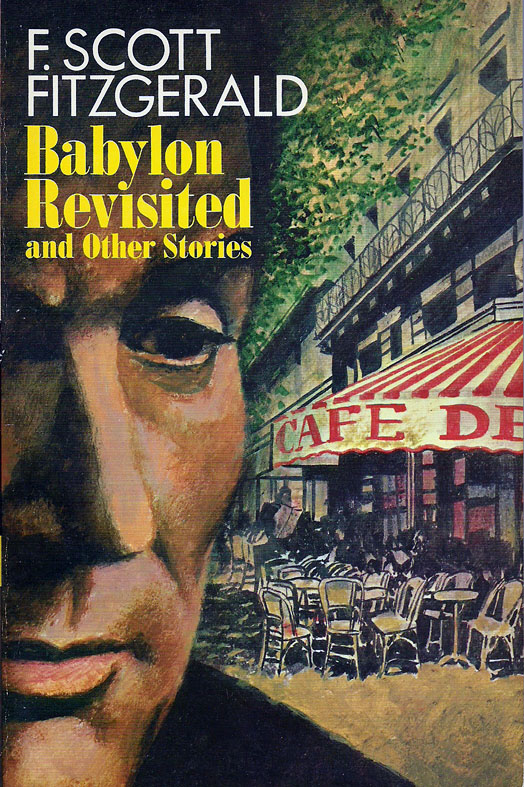 The illustrator and designer Hal Siegel (active 1950s-1980s) gained a dedicated following among art directors for his striking book cover designs. Freelancing for various major publishing houses, his commissions grew until the late 1970s, when Siegel became art director for Prentice-Hall in Englewood Cliffs, New Jersey.
The illustrator and designer Hal Siegel (active 1950s-1980s) gained a dedicated following among art directors for his striking book cover designs. Freelancing for various major publishing houses, his commissions grew until the late 1970s, when Siegel became art director for Prentice-Hall in Englewood Cliffs, New Jersey.
One of his most important early commissions came from Charles Scribner’s Sons, where a decision was made to publish a series of paperback editions of F. Scott Fitzgerald’s novels.
The Graphic Arts Collection holds ten paintings by Siegel, oil on board, which served as the basis for ten Fitzgerald book covers, each sporting bright yellow lettering. Here are a few examples.
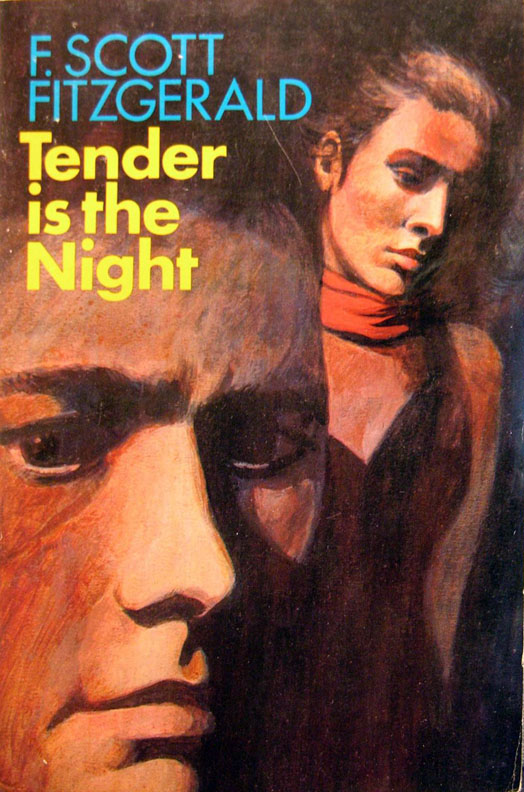
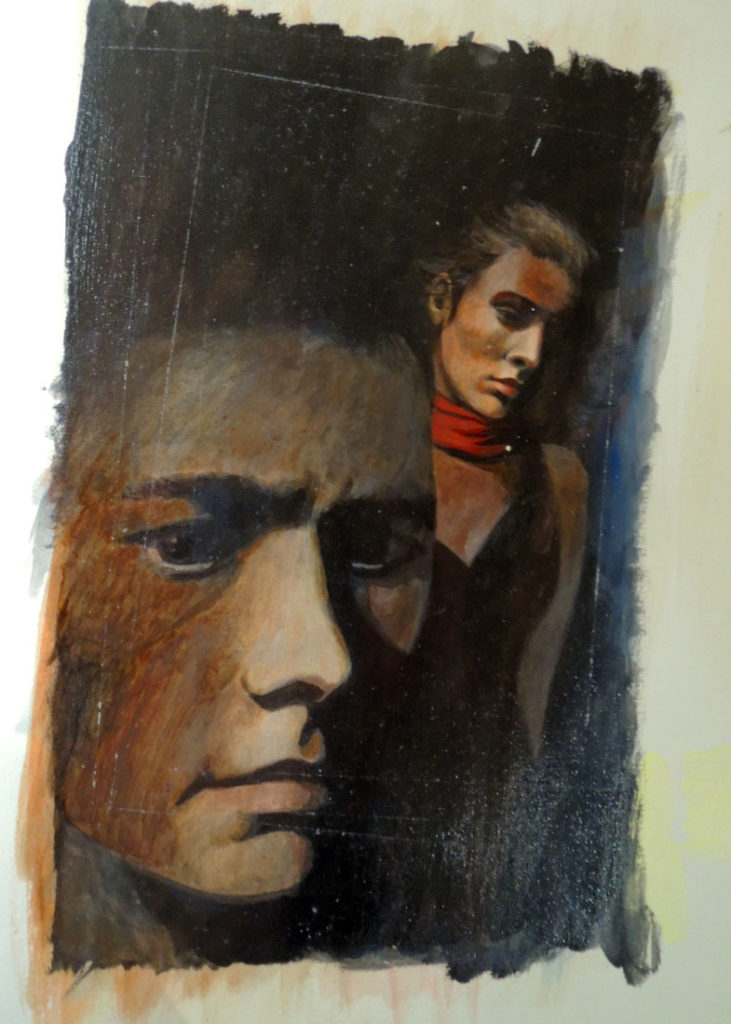 Design for Tender Is the Night painted by Hal Siegel. (c) Charles Scribner’s Sons
Design for Tender Is the Night painted by Hal Siegel. (c) Charles Scribner’s Sons
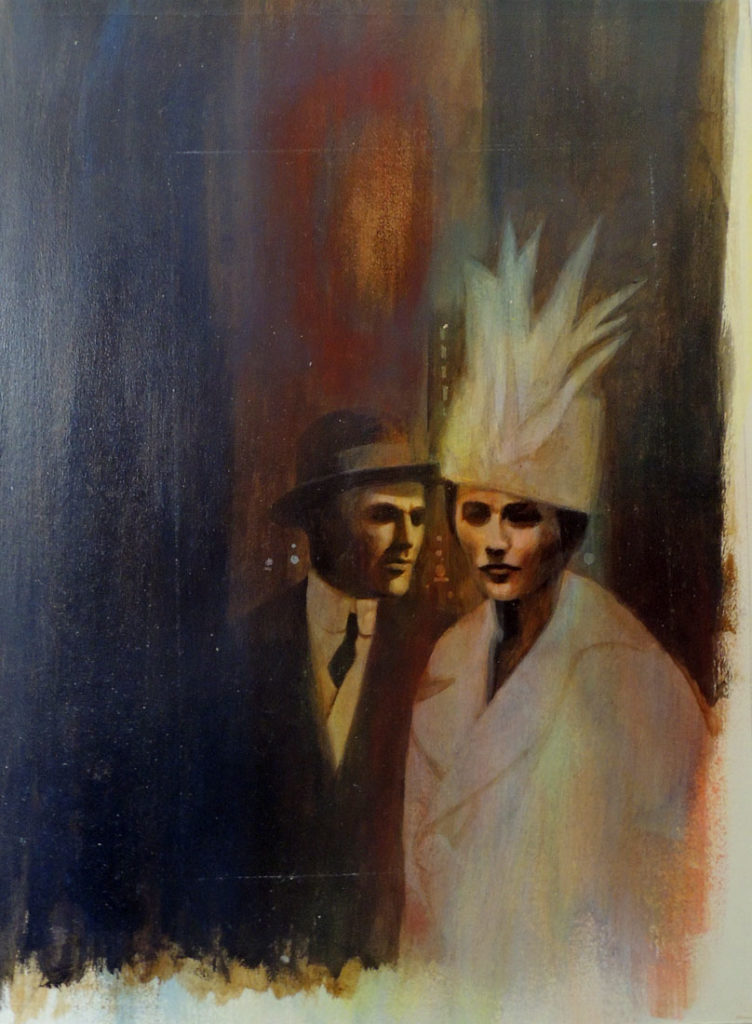 Design for The Beautiful and the Damned, painted by Hal Siegel. (c) Charles Scribner’s Sons
Design for The Beautiful and the Damned, painted by Hal Siegel. (c) Charles Scribner’s Sons
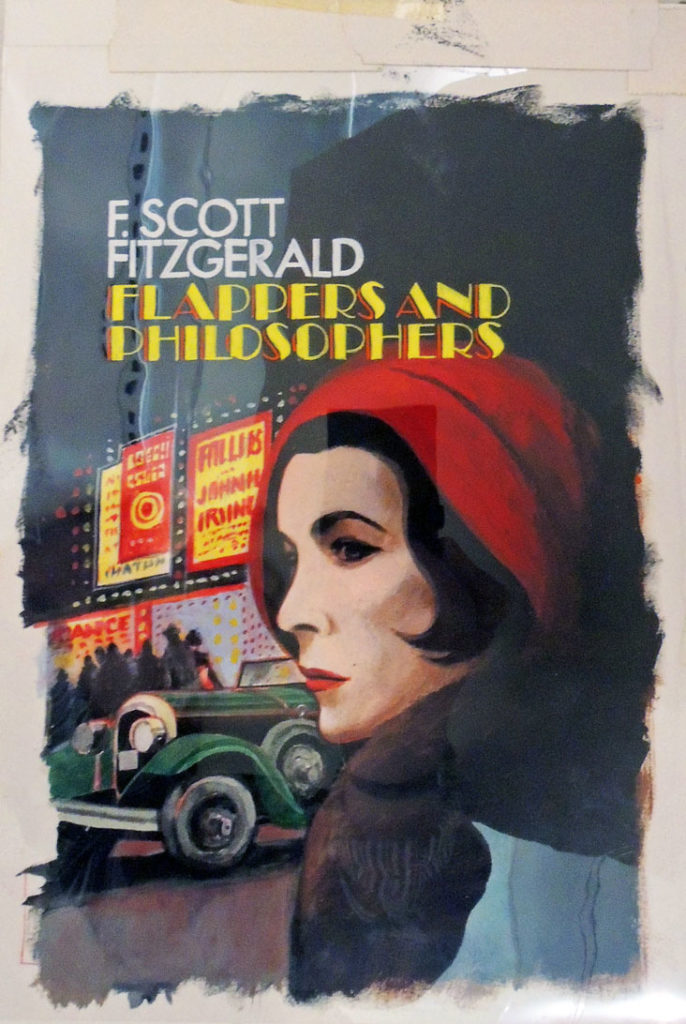 Design for Flappers and Philosophers painted by Hal Siegel. (c) Charles Scribner’s Sons
Design for Flappers and Philosophers painted by Hal Siegel. (c) Charles Scribner’s Sons
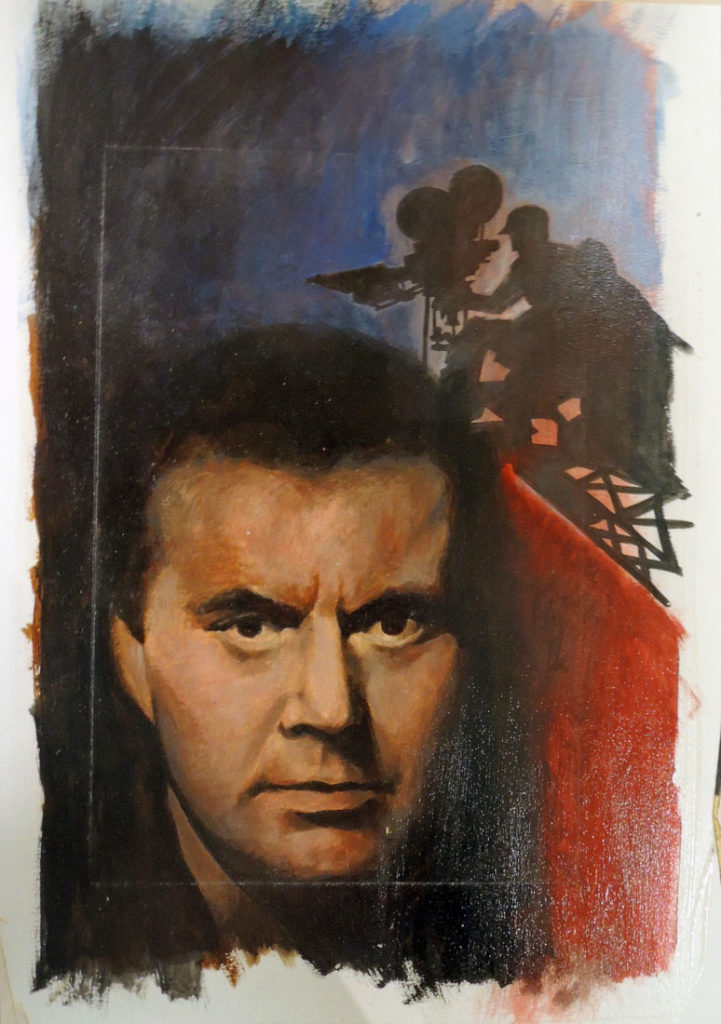 Design for The Last Tycoon painted by Hal Siegel. (c) Charles Scribner’s Sons
Design for The Last Tycoon painted by Hal Siegel. (c) Charles Scribner’s Sons
It is unfortunate that Siegel fails to appear in any American art index or directory, leaving his biography sadly incomplete. Here is a partial list of the books (taken from online sources) with a cover design or art direction by Siegel.
Edouard Glissant, The Ripening (New York: George Braziller, 1959).
Arthur C. Clarke, Tales of Ten Worlds (New York: Harcourt, Brace & World, Inc., 1962).
Bruno Bettelheim, The Empty Fortress: Infantile Autism and the Birth of the Self (New York: Free Press/A Division of the Macmillan Company, 1967).
Ray Birdwhistell, Kinesics and Context: Essays on Body Motion Communication (Philadelphia, PA: University of Pennsylvania Press, 1970).
Maurice Chevalier, I Remember It Well ([New York] The Macmillan Company [1970]).
F. Scott Fitzgerald, This Side of Paradise (New York: Charles Scribner’s Sons, 1970).
Robert Flynn, The Sounds of Rescue, The Signs of Hope (New York: Alfred A. Knopf, 1970).
Pamela Hansford Johnson, The Honours Board (New York: Charles Scribner’s Sons, 1970).
William L. Henderson and Larry C. Ledebur, Economic Disparity: problems and strategies for Black America (New York: Free Press, 1970).
Marshall McLuhan and Wilfred Watson, From Cliche to Archetype (New York: Viking Press, 1970).
Ursule Molinaro, The Borrower, An Alchemical Novel (New York: Harper and Row Publishers, 1970).
Alice Walker, The Third Life of Grange Copeland (New York: Harcourt Brace & Jovanovich, 1970).
David Amram, Vibrations – The Adventures and Musical Times of David Amram (New York: Viking Press, 1971).
Walter Allen (editor), Transatlantic Crossing: American Visitors to Britain and British Visitors to America in the 19th Century (New York: William Morrow, 1971).
Adolph F. Bandelier, The Delight Makers: a novel of prehistoric Pueblo Indians (New York: Harcourt Brace/Harvest, 1971).
Alfred Coppel, Between the Thunder and the Sun (New York: Harcourt, Brace, Jovanovich 1971).
Kenneth W. Grundy, Guerrilla Struggle in Africa: an analysis and preview (New York: Grossman, 1971).
James Henderson, Copperhead (New York: Alfred A. Knopf, 1971).
Stanley Kauffmann, Figures of Light: Film Criticism and Comment (New York: Harper & Row, 1971).
Kenneth Keniston, Youth and Dissent: The Rise of a New Opposition (New York: A Harvest Book/ Harcourt Brace Jovanovich, Inc., 1971).
John Kobler, Capone, The Life & World of Al Capone (New York: Putnam’s, 1971).
Jerzy Kosinski, Being There (New York: Harcourt Brace Jovanovich, 1971).
Patricia Laubger, Of Man and Mouse How House Mice Became Laboratory Mice (New York: Viking Press, 1971).
Tom McHale, Farragan’s Retreat (New York: The Viking Press, 1971).
Nicholas Monsarrat, Breaking in-Breaking Out, An Autobiography (New York: Morrow, 1971).
Augustus J. Rogers, III, Choice: An Introduction to Economics (Englewood Cliffs, NJ: Prentice- Hall, 1971).
Derek Robinson, Goshawk Squadron a Novel (New York: The Viking Press, 1971).
Muriel Spark, Not to Disturb (New York: Viking Press, 1971).
John Stickney, Streets, Actions, Alternatives, Raps (New York: G.P. Putnam’s Sons, 1971).
Ian Wallace, The Pearl and Prince (New York: McCall Books, 1971).
Jay David, (editor), Black Defiance: Black Profiles in Courage (New York: William Morrow, 1972).
Robertson Davies, The Manticore (New York: The Viking Press, 1972).
G. Davis and K. Pedler, Mutant 59: The Plastic Eaters (New York: Viking Penguin, 1972.
F. Scott Fitzgerald, The Great Gatsby (New York: Charles Scribner’s Sons, 1972).
Helen Hayes and Anita Loos, Twice Over Lightly: New York Then and Now (New York: Harcourt Brace Jovanovich, Inc. [1972]).
George V. Higgins, The Friends of Eddie Coyle (New York: Alfred A. Knopf, 1972).
Elizabeth Jane Howard, Odd Girl Out (New York: Viking Press, 1972).
Jeanine Larmoth, Murder on The Menu [Food and Drink in The English Mystery Novel] (New York: Charles Scribner’s Sons [1972]).
David O. Selznick, Memo from David O. Selznick (New York, The Viking Press [1972]).
Arthur C. Clarke, Rendezvous with Rama (New York; Harcourt Brace Jovanovich, 1973).
Spencer Dunmore, The Last Hill (New York: William Morrow, 1973).
Lebar Gerard and Jacques Israel, When Jerusalem Burned (New York: William Morrow, 1973).
Ross MacDonald, Sleeping Beauty (New York: Alfred A. Knopf, 1973).
Arthur Miller, The Creation of the World and Other Business: A Play (New York: Viking Press, 1973).
Jesse Stuart, The Land Beyond the River (New York: McGraw-Hill Book Company, 1973).
I.S. Young, Uncle Herschel, Dr. Padilsky, and the Evil Eye: A Novel of Old Brooklyn (New York: Harcourt Brace Jovanovich, c.1973).
Stanley Ellin, Stronghold (New York: Random House, 1974).
Jess Stearn, A Prophet in His Own Country: The Story of the Young Edgar Cayce (New York: William Morrow & Company, Inc., 1974).
Berkely Mather, With Extreme Prejudice (New York: Charles Scribner’s Sons, 1975).
Rumer Godden, The Peacock Spring (New York: The Viking Press, 1976).
Ross MacDonald, The Blue Hammer (New York: Alfred A. Knopf, 1976).
Maria Rasputin and Patte Barham, Rasputin: The Man Behind the Myth (Englewood Cliffs, N.J.: Prentice-Hall, 1977).
Stephen Marlowe, Translation (New York: W H Allen, 1977).
Robert Westall, The Wind Eye (New York: Greenwillow Books, 1977).
Children’s Toys You Can Build Yourself (Englewood Cliffs: Prentice-Hall Inc [c.1978]).
Cheli Duran, Kindling (New York: Greenwillow, 1979).
Alma J. Koenig, Gudrun (New York, NY: Lothrop, Lee & Shepard, 1979).
Jane Roberts, The Further Education of Oversoul Seven (Englewood Cliffs, N.J.: Prentice-Hall, 1979).
Christiaan Barnard, Good Life Good Death, a Doctor’s Case for Euthanasia & Suicide (Englewood Cliff, N.J.: Prentice-Hall, 1980).
Mary Glatzle with Evelyn Fiore, Muggable Mary: My Life with the Street Crime Unit (Englewood Cliffs, NJ: Prentice-Hall, Inc., 1980).
Maxine Marx, Growing Up with Chico, The Biography of Chico Marx by His Daughter (Englewood Cliffs, N.J.: Prentice-Hall, 1980).
Joel L. Fleishman (Edited by), The Future of American Political Parties – The Challenge of Governance (Englewood Cliffs, NJ: A Spectrum Book/ Prentice-Hall, Inc., 1982).
James Reid Macdonald, The Fossil Collectors’ Handbook: a paleontology field guide (Englewood Cliffs, NJ: Prentice-Hall, 1983).
Lawrence Fawcett, Clear Intent: The Government Coverup of the UFO Experience (Englewood Cliffs, New Jersey: Reward Books, 1984).
David Pepi, Thoreau’s Method: A Handbook for Nature Study (Englewood Cliffs, NJ: Prentice Hall, 1985).
Chet Raymo, Honey from Stone: A Naturalist’s Search for God (New York: Dodd, Mead & Company Inc [1987]).
Lynne Bravo Rosewater, Changing through Therapy: understanding the therapeutic experience (New York: Dodd, Mead, 1987).
Dolores Weeks, The Cape Murders (New York: Dodd, Mead & Company, 1987).
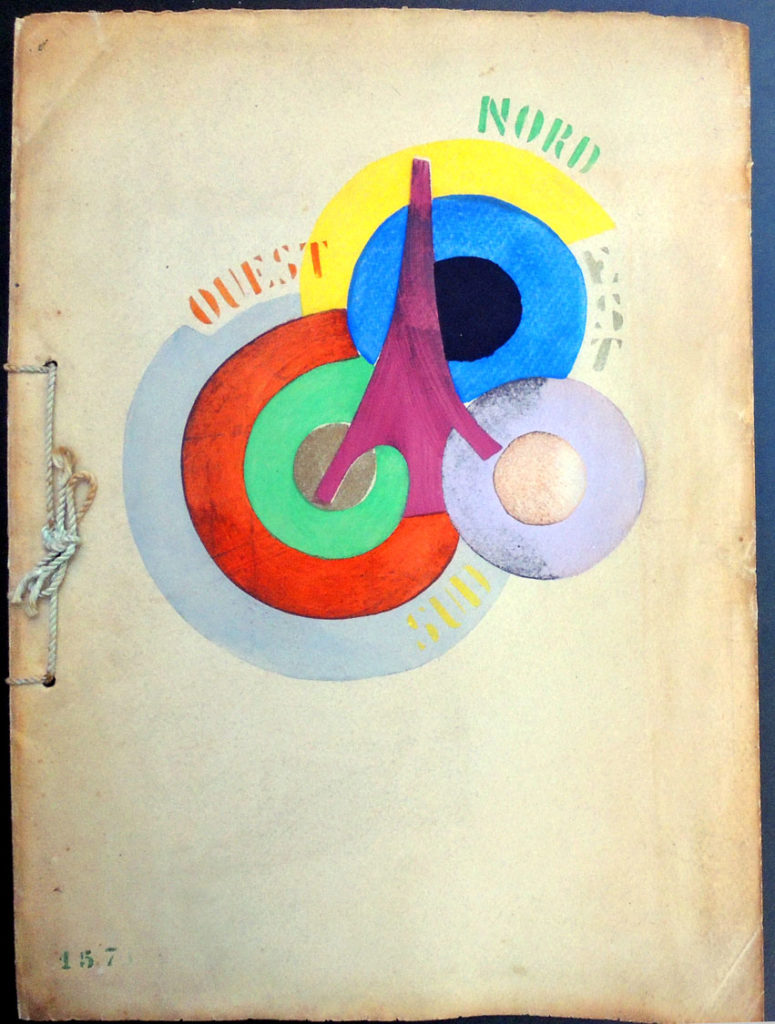 Vicente Huidobro (1893-1948) and Robert Delaunay (1885-1941), Tour Eiffel. Poème par Vincente Huidobro; peintures par Robert Delaunay (Madrid: privately printed, 1918). Graphic Arts Collection GAX 2018- in process
Vicente Huidobro (1893-1948) and Robert Delaunay (1885-1941), Tour Eiffel. Poème par Vincente Huidobro; peintures par Robert Delaunay (Madrid: privately printed, 1918). Graphic Arts Collection GAX 2018- in process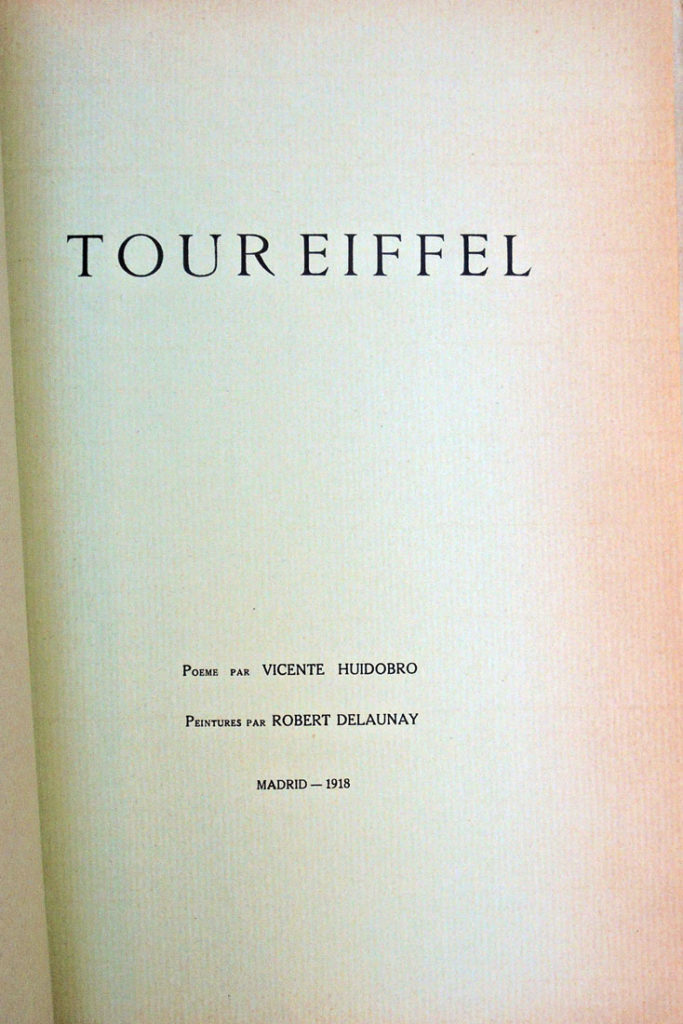
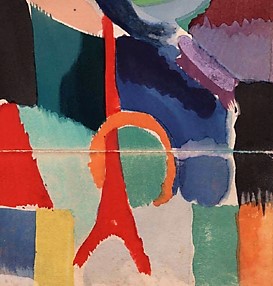 Deborah Wye wrote, “Comprised of brightly colored arabesques, concentric circles, triangles, and rectangles, Delaunay-Terk’s pochoir illustrations for Blaise Cendrars’s poem and its radical format have made this a landmark in the history of the modern book. . . . Calling their creation “the first simultaneous book,” Delaunay-Terk and Cendrars drew on the artistic theory of simultaneity, espoused by the artist’s husband, the painter Robert Delaunay, and modern poets.”–Artists and Prints: Masterworks from The Museum of Modern Art (2004).
Deborah Wye wrote, “Comprised of brightly colored arabesques, concentric circles, triangles, and rectangles, Delaunay-Terk’s pochoir illustrations for Blaise Cendrars’s poem and its radical format have made this a landmark in the history of the modern book. . . . Calling their creation “the first simultaneous book,” Delaunay-Terk and Cendrars drew on the artistic theory of simultaneity, espoused by the artist’s husband, the painter Robert Delaunay, and modern poets.”–Artists and Prints: Masterworks from The Museum of Modern Art (2004).
